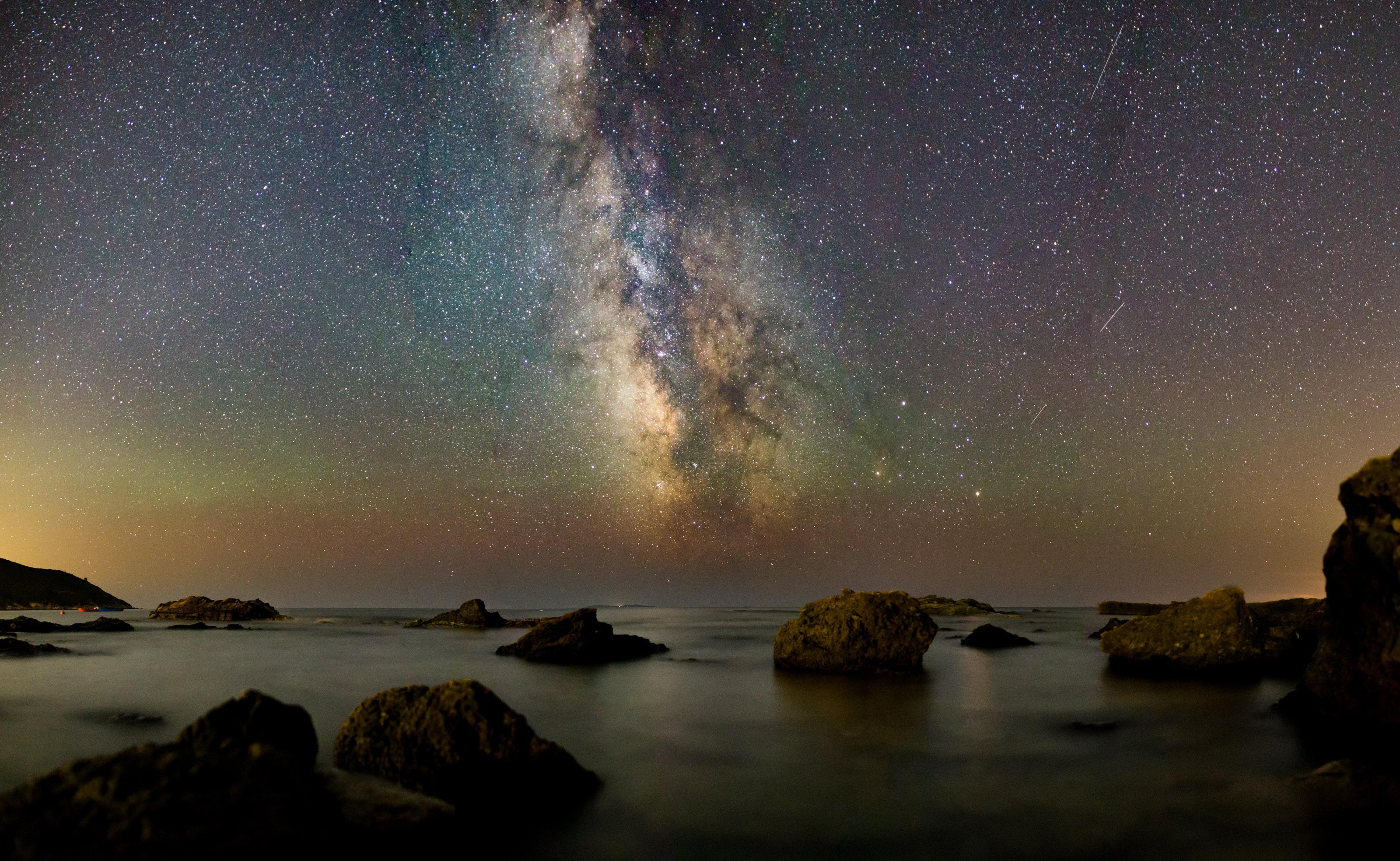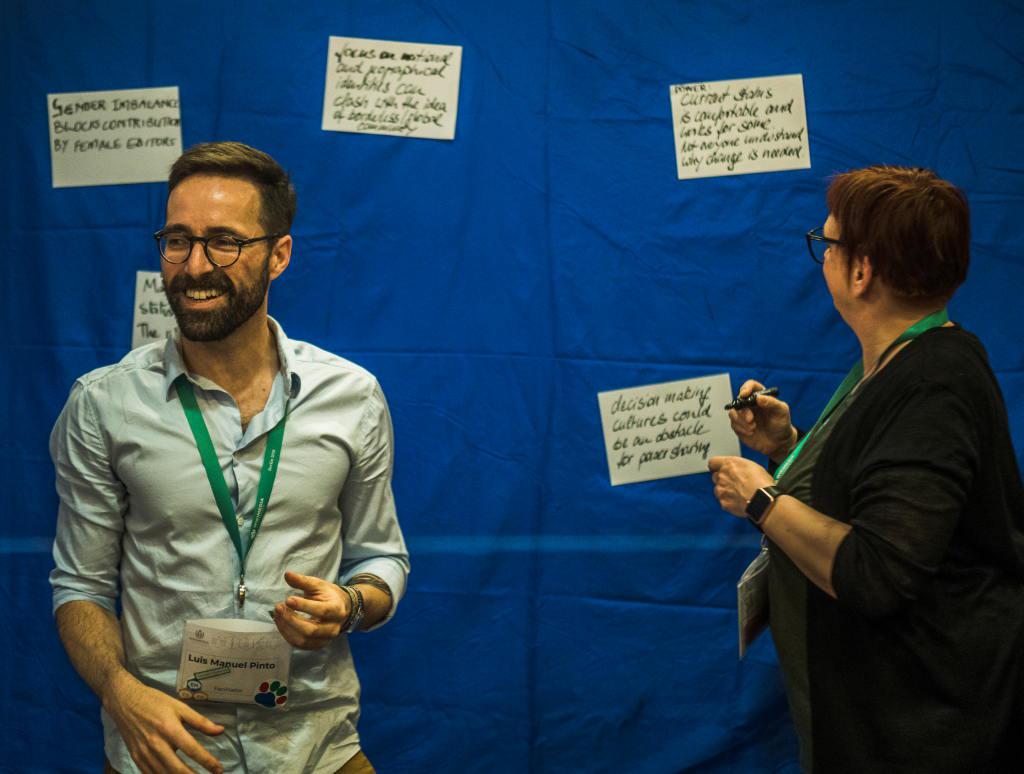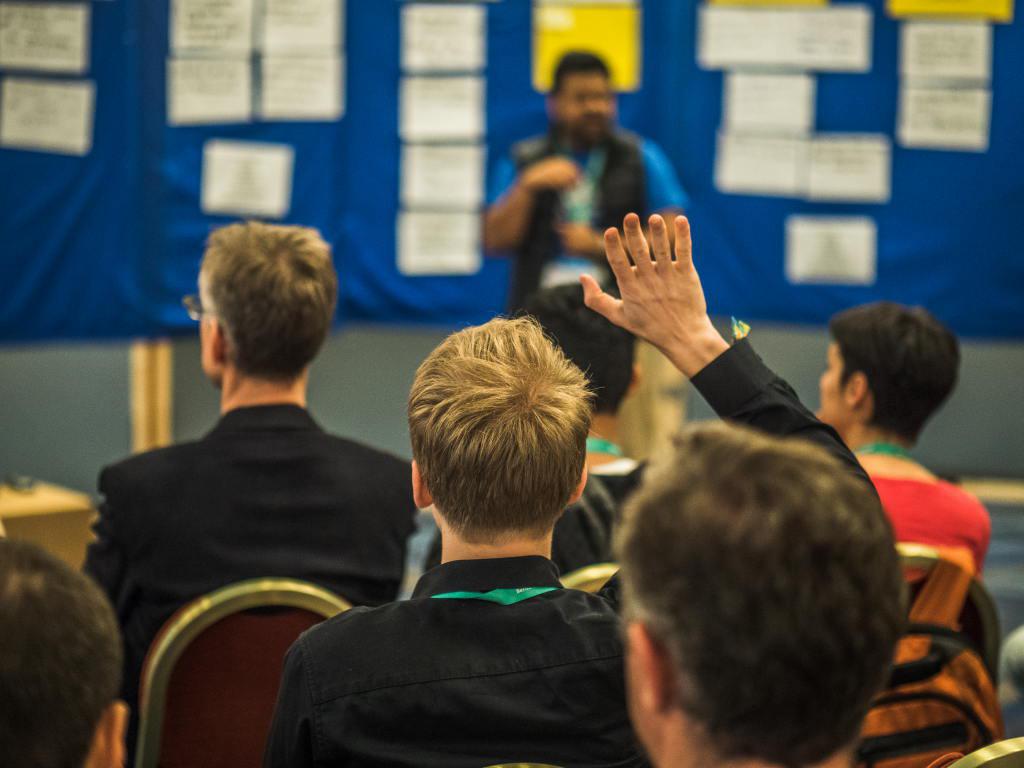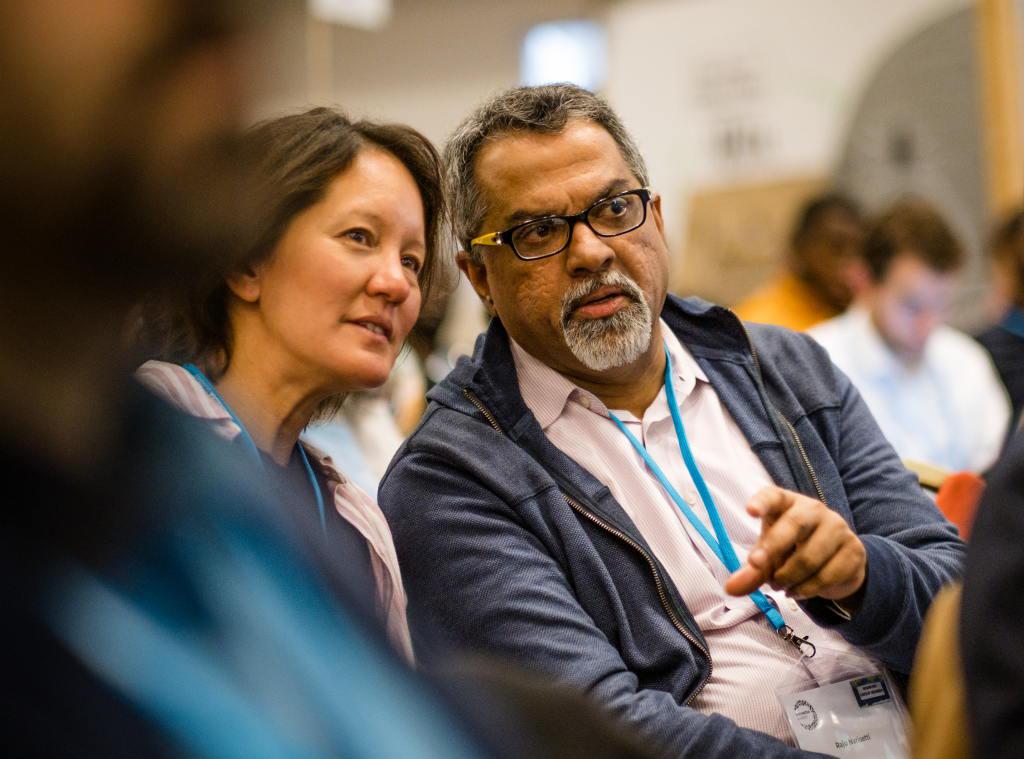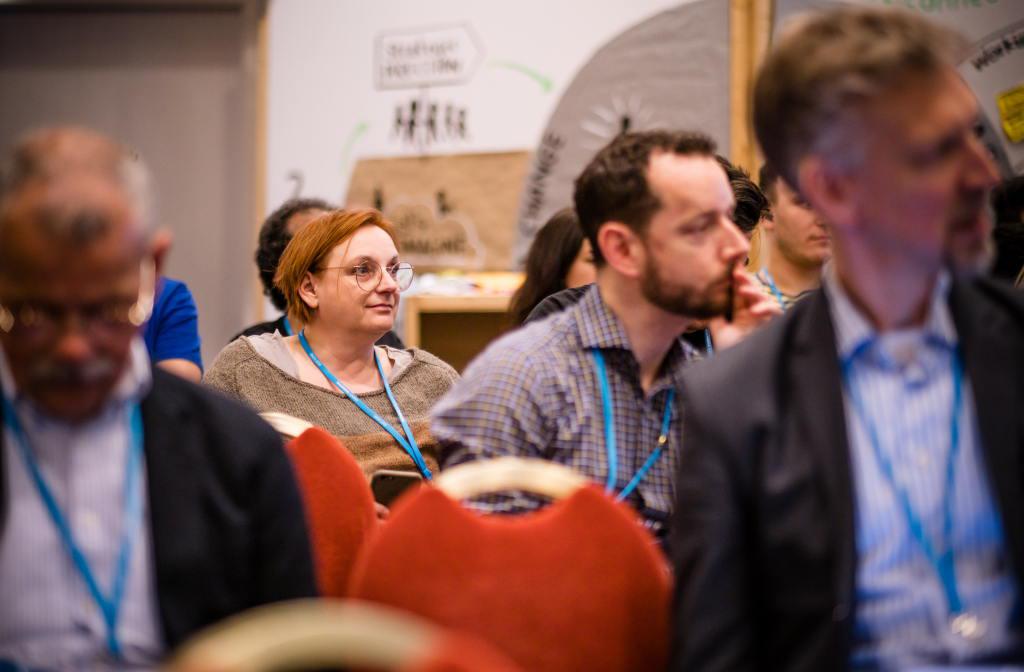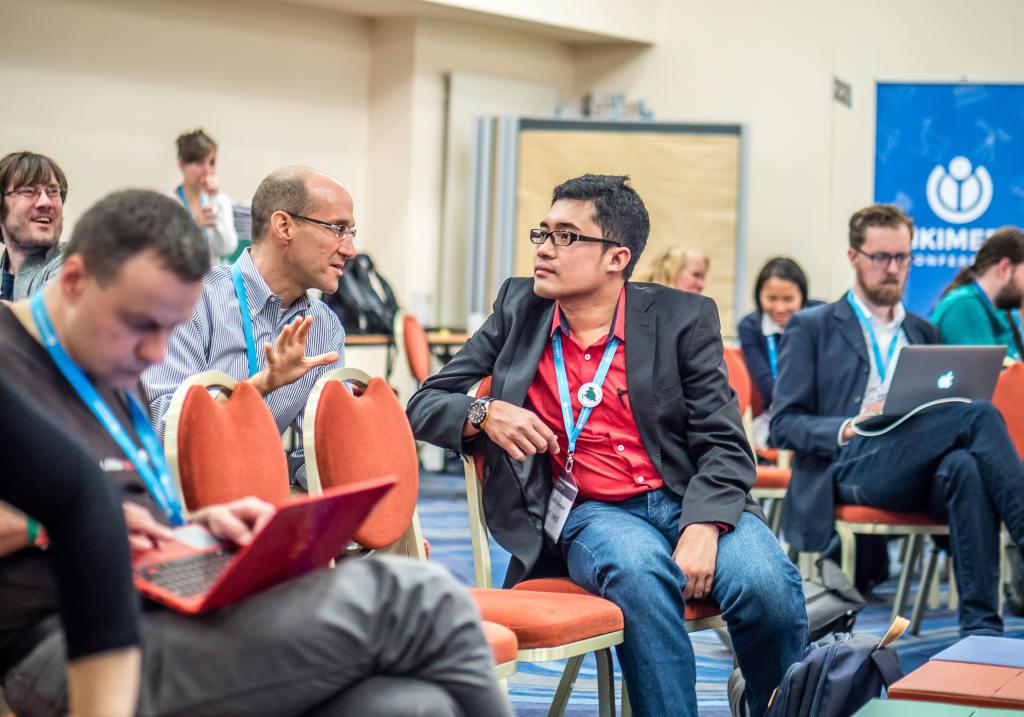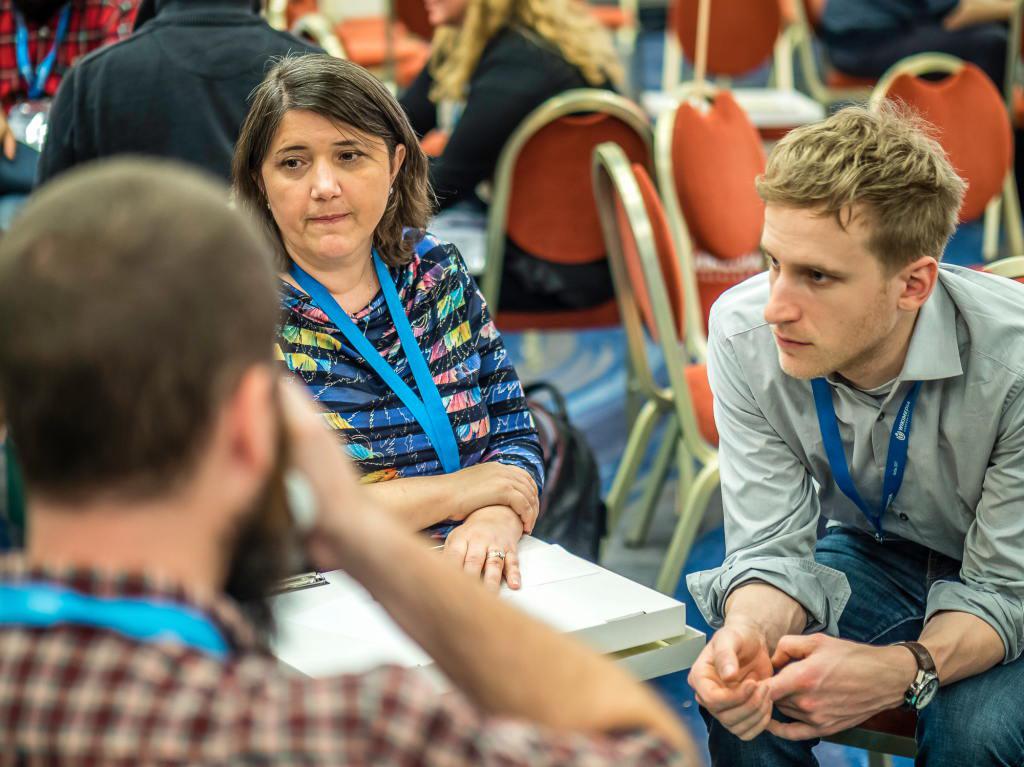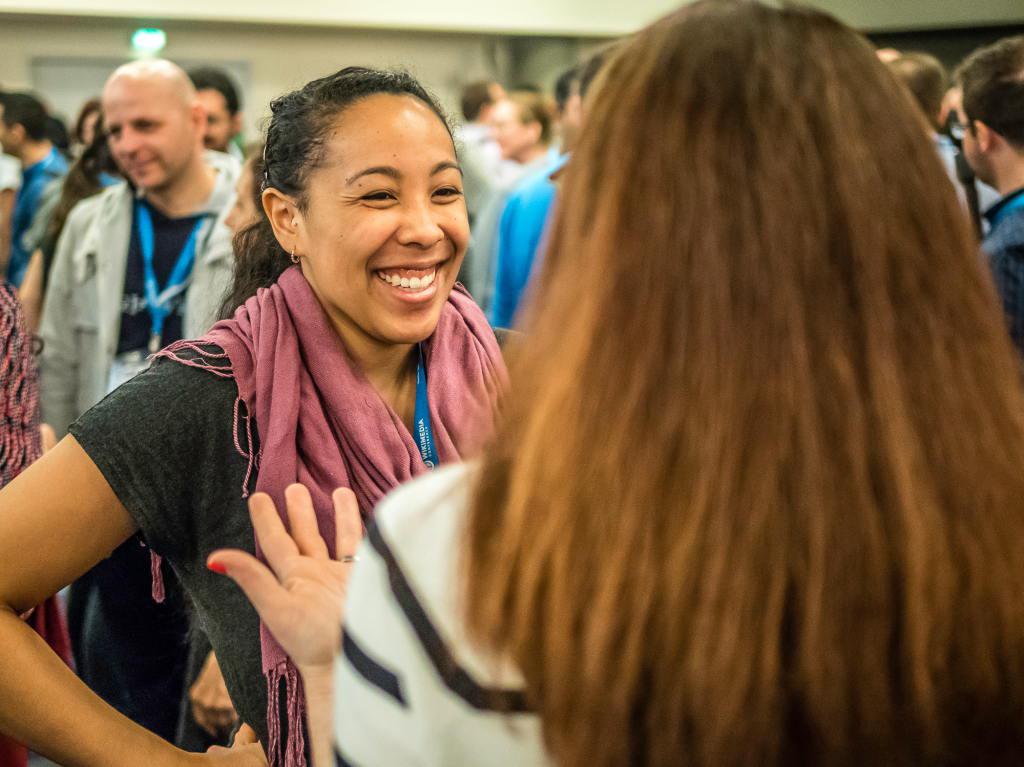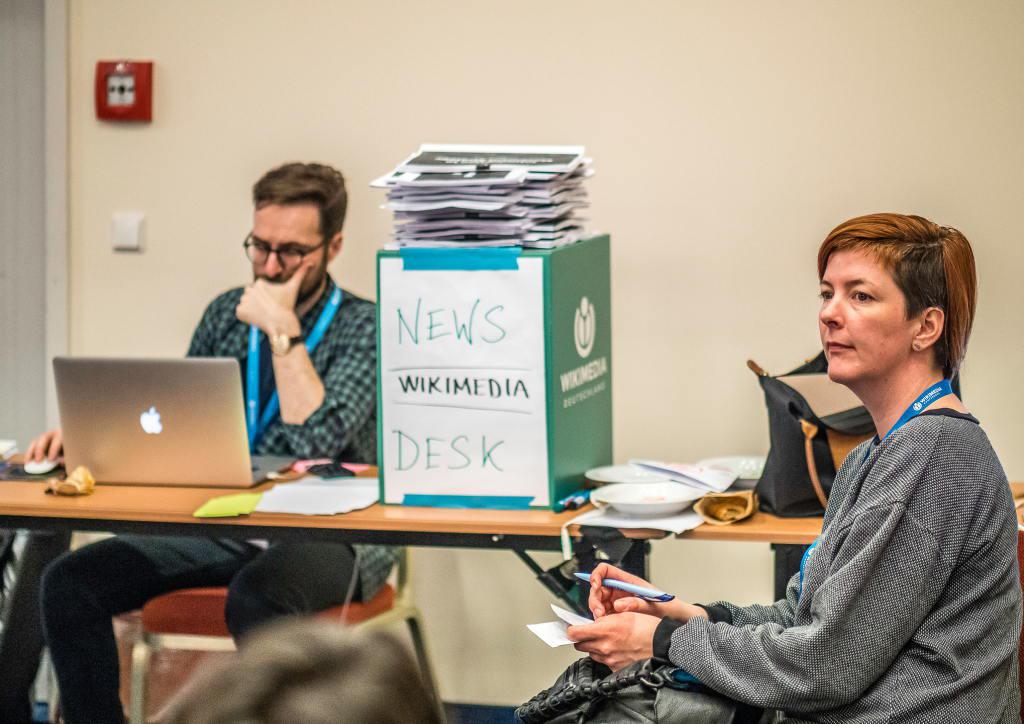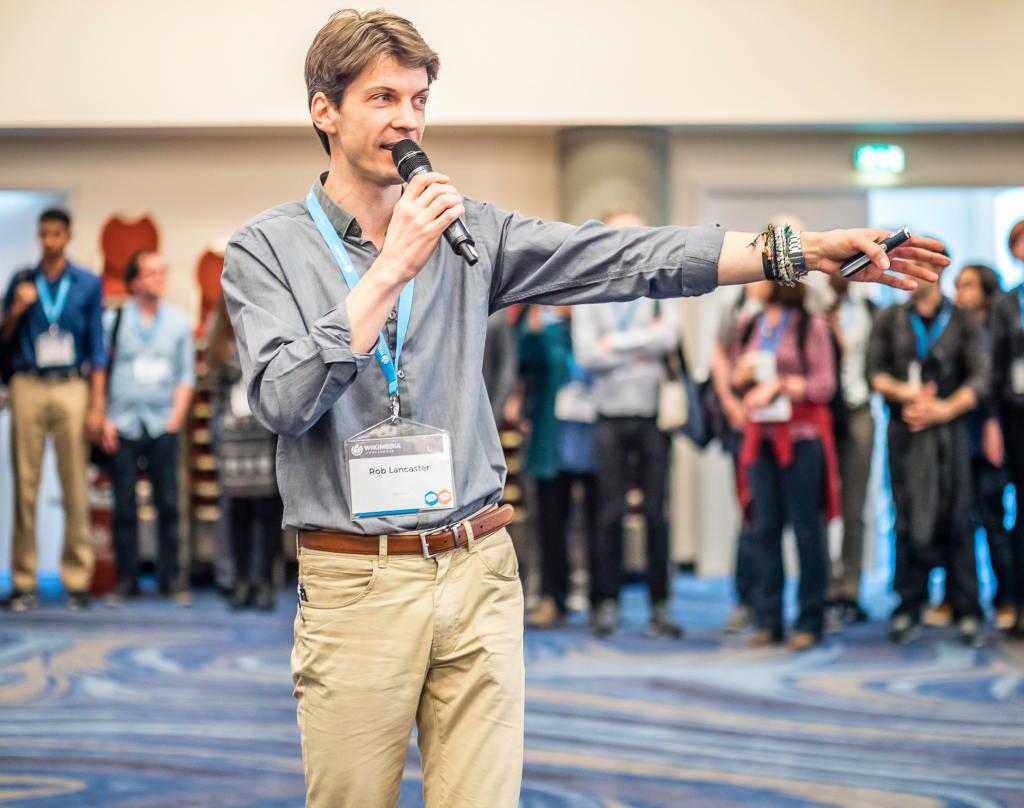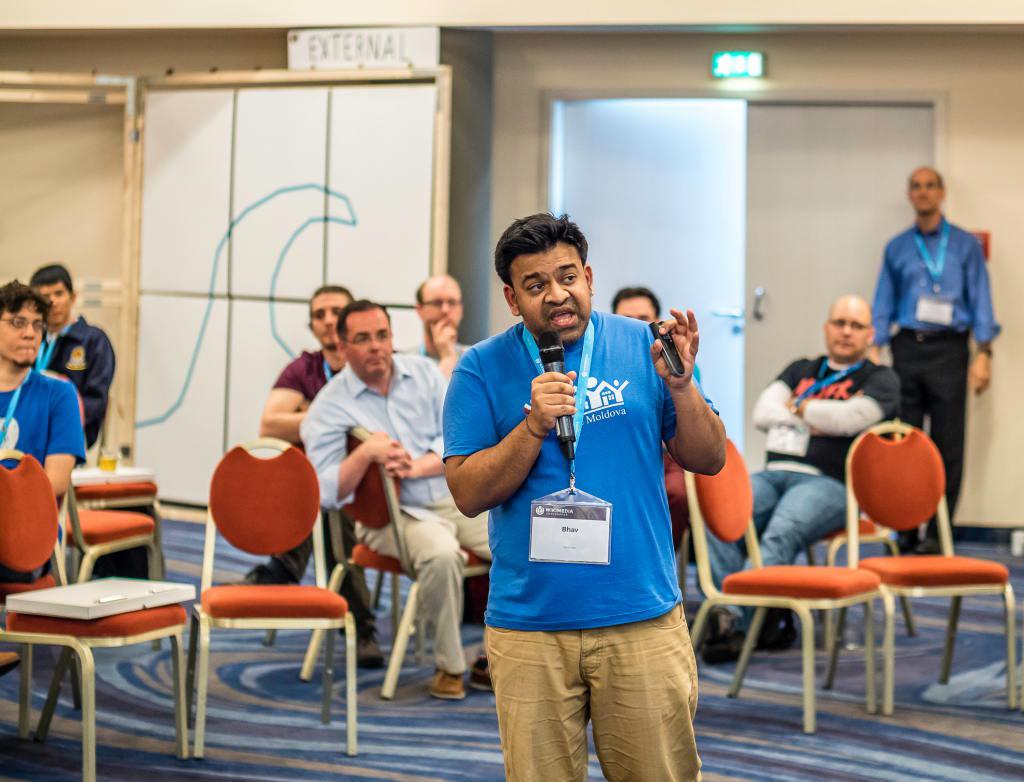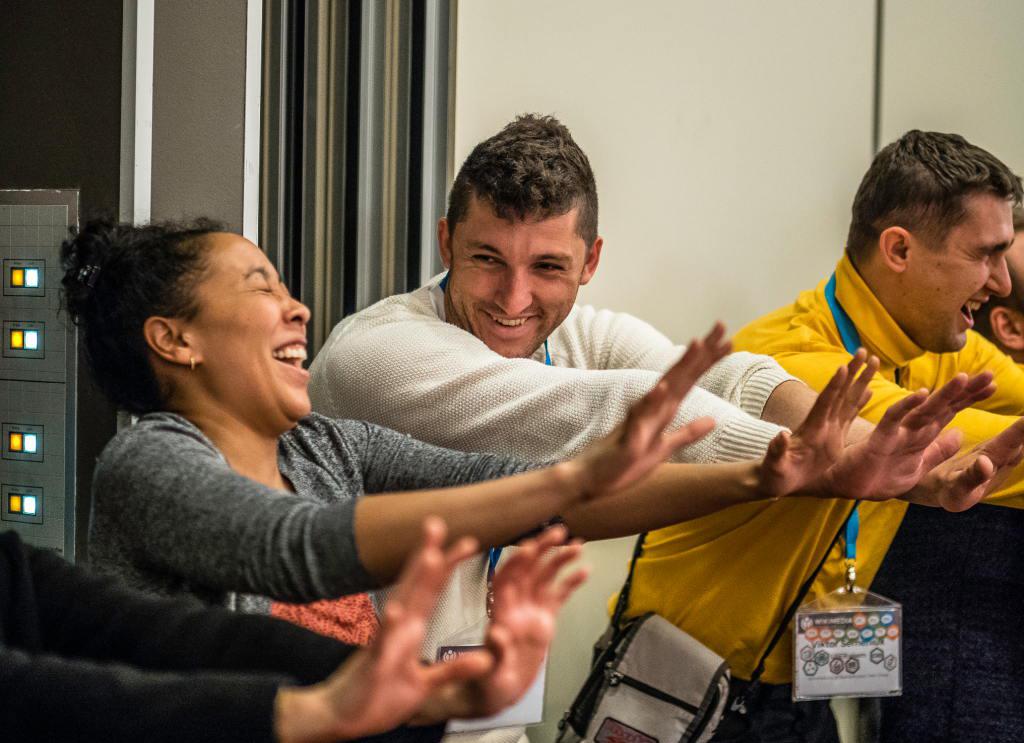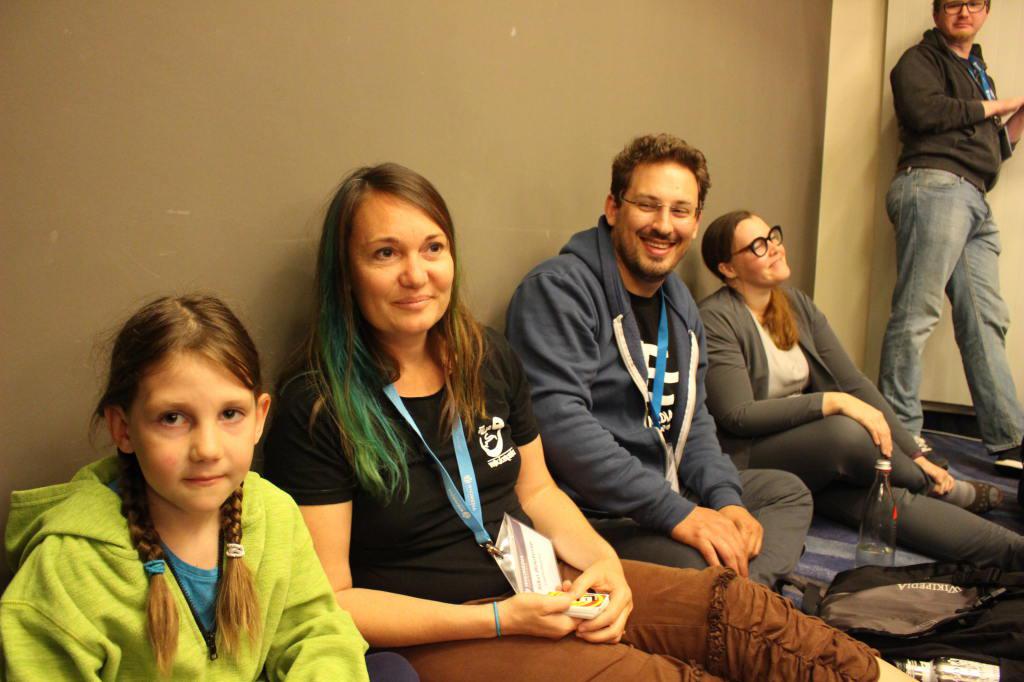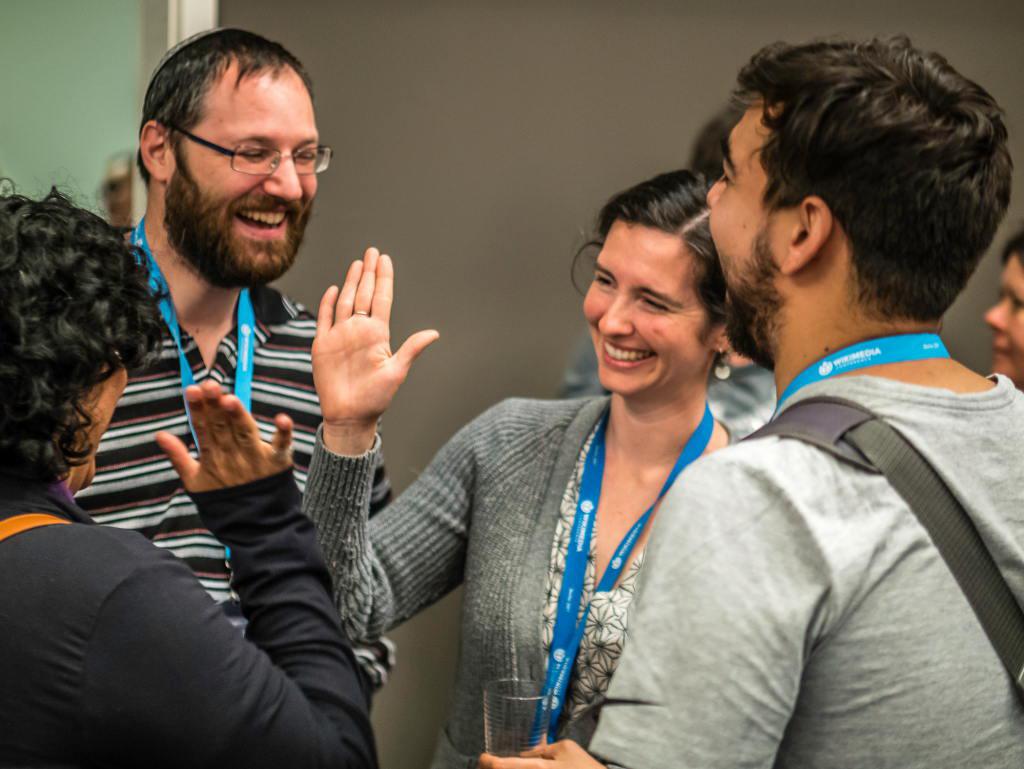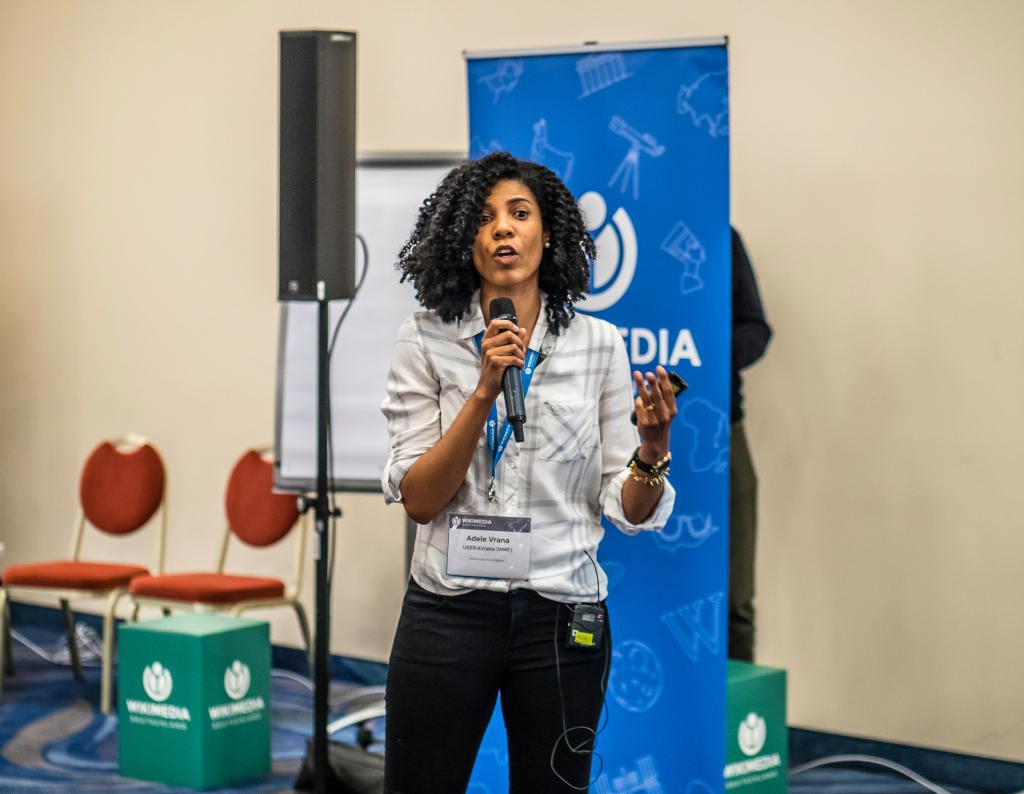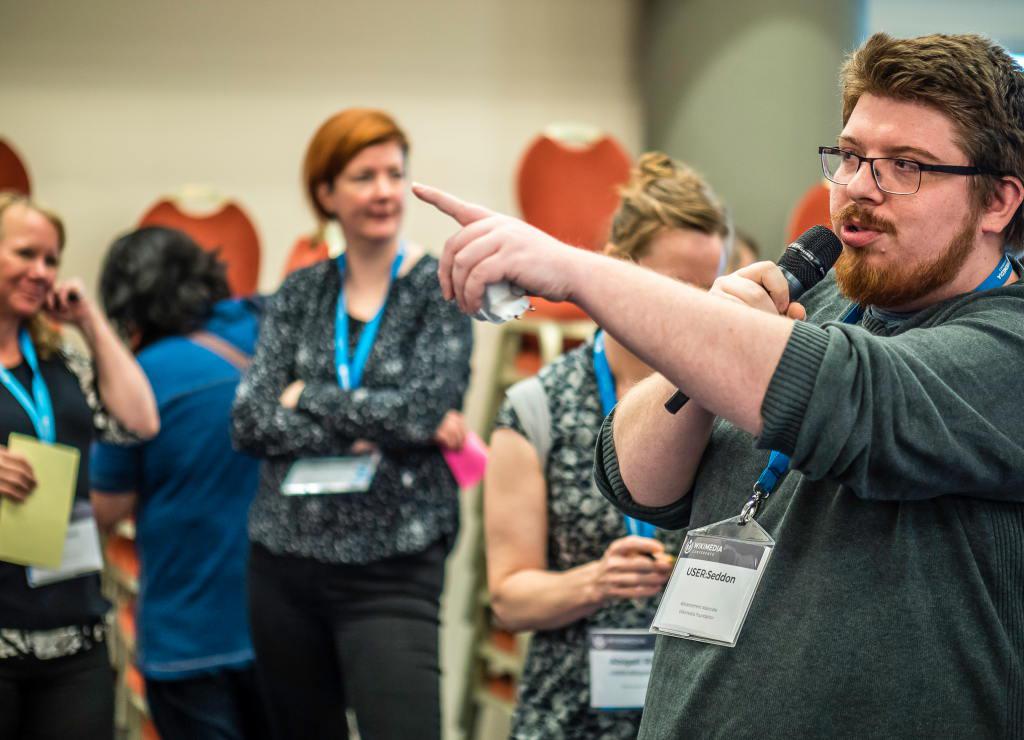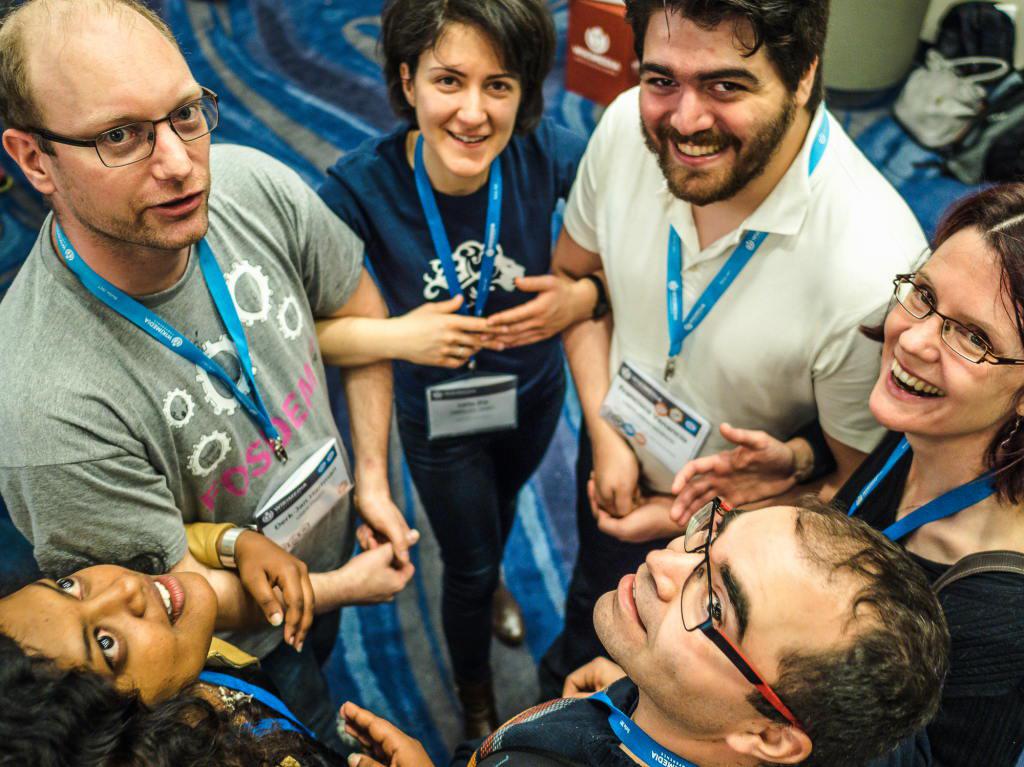In 2016–2017, I was a Lead Architect for Wikimedia 2030, a global, participatory strategy process involving dozens of movement organizations and thousands of individuals. I was key in designing the process and guiding the movement through an intense exercise involving several cycles of community discussions, in-person events, interviews with experts, and commissioned research.
I led the synthesis of all inputs, conversations, and research into several drafts that were further discussed and edited. I was the main author of the Strategic Direction that emerged and went on to be endorsed by a hundred Wikimedia organizations around the world.
The Strategic Direction of “Knowledge Equity and Knowledge as a Service” now serves as the compass for multi-year strategic planning by Wikimedia organizations, and guides decision-making around roles, responsibilities, and resources in the Wikimedia movement.
“Your mission, should you choose to accept it …”

We had less than a year to get a boisterous global movement aligned on a shared strategic direction. Like all good Mission: Impossible episodes, not everything went according to plan. But we adapted to the unexpected and, against all odds, brought the movement together for the first time in years.
We chose to do this not because it was easy.
Building a strategy is hard. Imagine building a shared strategy across a movement of hundreds of thousands of stakeholders, with no direct line of communication with most of them, no predetermined outcome, and while rebuilding trust and good faith that have been eroded in the past. Imagine building a collaborative strategy from the ground up, in true Wikipedian fashion, through a dialogue happening around the world in dozens of languages.
That’s what we did.
We didn’t know how we were going to do it. We didn’t know how it was going to go. We didn’t know what the result was going to be. We did it anyway, because it was the only way to build trust and alignment across the movement.
Building a strategy is hard, but we are a movement of smart, passionate people obsessed with facts, citations, and intellectual integrity. We have in common a passion for free knowledge and a commitment to serving all human beings. If anyone could build a collaborative strategy, we could.
And so it began. We put together a team. We designed a process, and adjusted it many times. Our aim was to identify a common strategic direction that would unite and inspire people across our movement on our way to 2030, and help us make decisions. I was a Lead Architect in the small core team driving this process,[1] along with other employees of the Wikimedia Foundation and in the movement, the folks at williamsworks,[2] and our fearless leader, Katherine Maher.
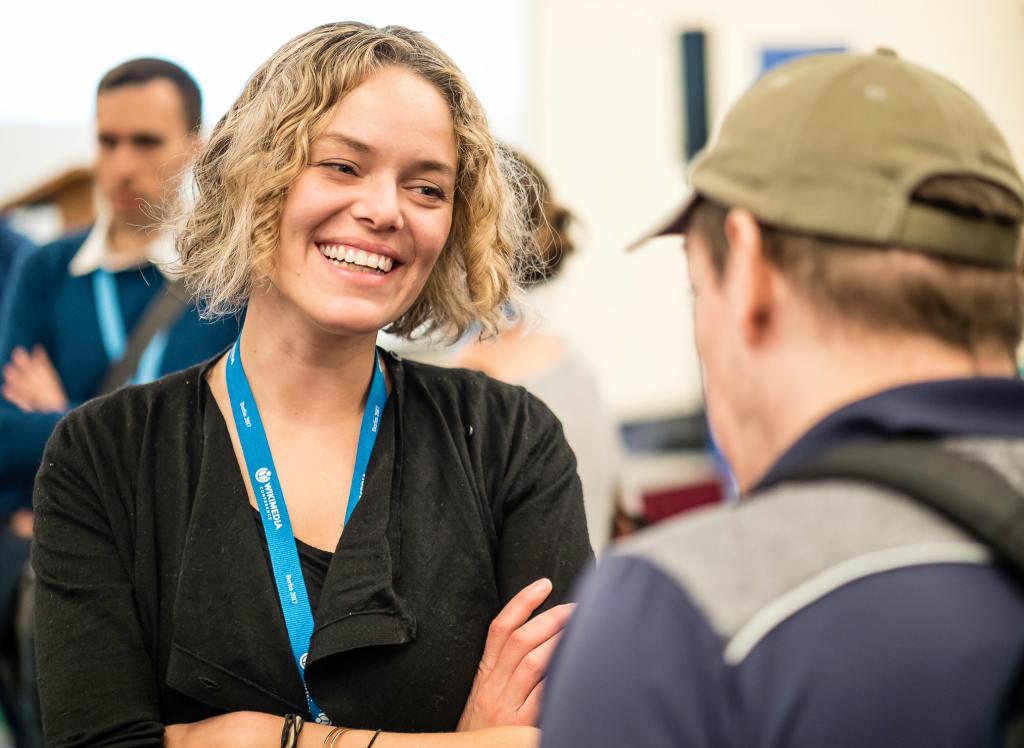

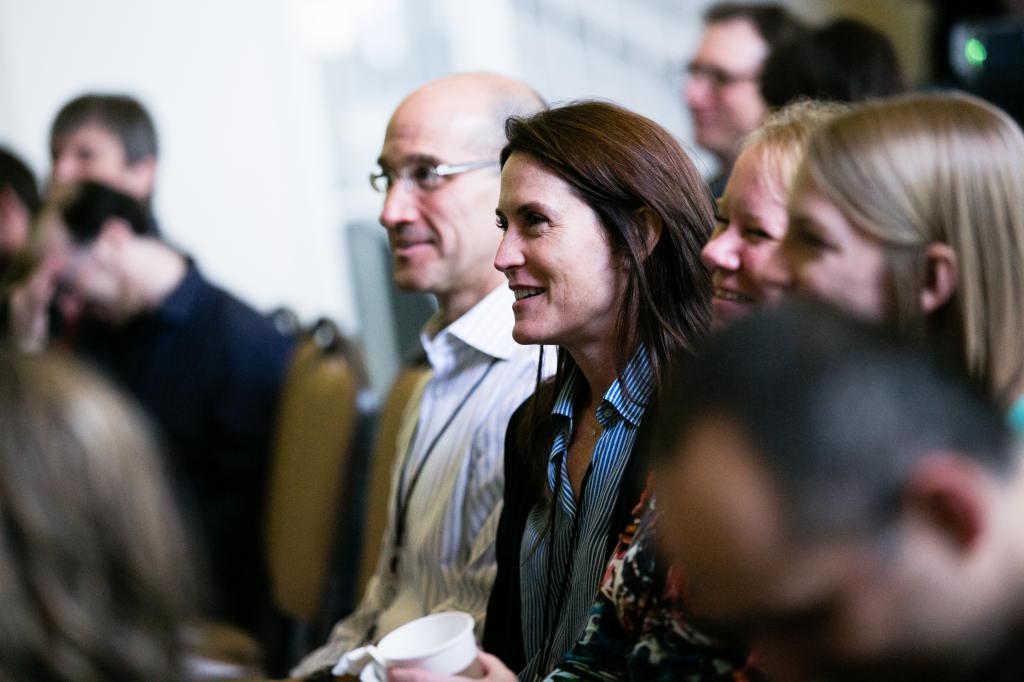
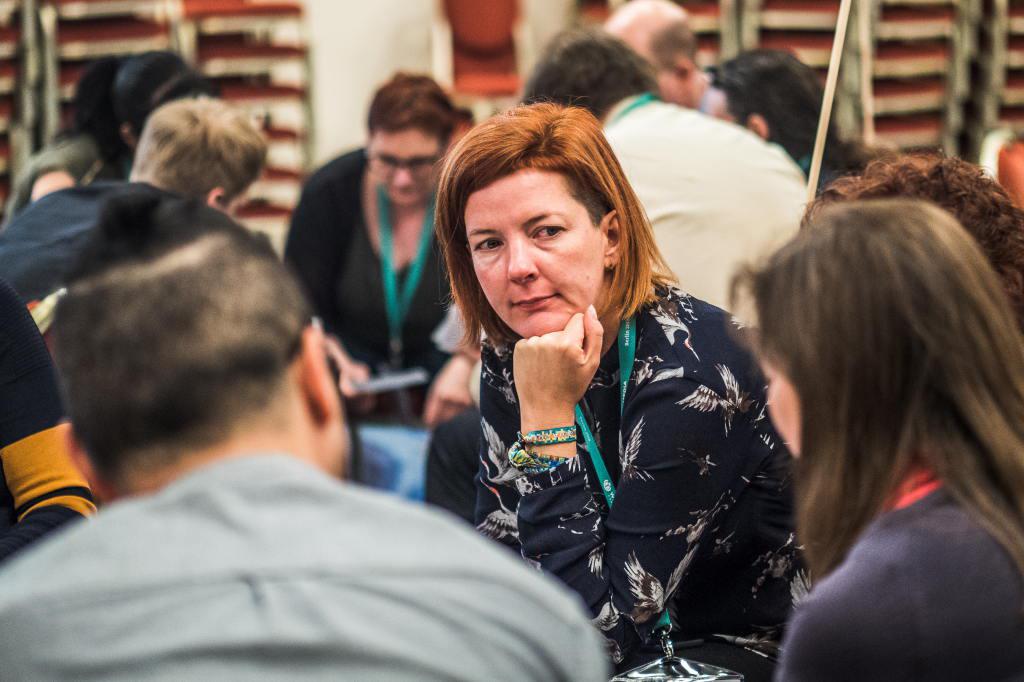
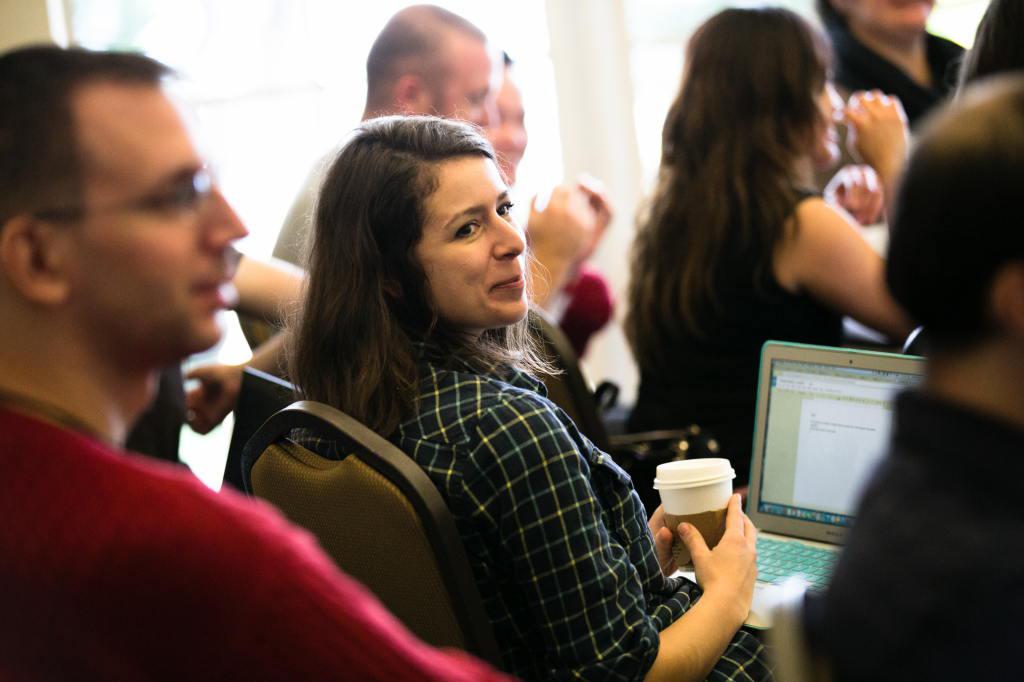
Jason Krüger for Wikimedia Deutschland e.V. (1, 2, 4), CC BY-SA 4.0 // Myleen Hollero (3, 5), CC BY-SA 3.0.
Building alignment
Fast forward a little under a year, and dozens of groups and organizations endorsed the new strategic direction, focused on “Knowledge as a service” and “Knowledge equity.”[3]
Several themes emerged from the mass of information and were further integrated into successive drafts of the direction. A stable version emerged shortly before the Wikimania conference in August, and was discussed extensively online and in Montréal. I rewrote it, revised it, refined it, and it eventually became the final version of the strategic direction.
After years of tensions between the Wikimedia Foundation and other actors of the Wikimedia movement, groups and individuals started declaring their intent to work together towards this future by endorsing the direction. In less than a week, over 70 groups and organizations had already endorsed it; they had committed to participating in the next phase in good faith and to come to an agreement on roles, responsibilities, and organizational strategies that would enable the movement to implement that future. In the end nearly 100 groups and organizations signed on, representing an unprecedented alignment in the history of the Wikimedia movement.[4]
Cyndi Suarez from Nonprofit Quarterly wrote that “Wikimedia’s Strategic Direction Project is a Model of Democracy.”[5] Over at Forbes, Michael Bernick, describing “The Power Of The Wikimedia Movement Beyond Wikimedia,” concluded that “[Wikimedia] gives us glimpses of what is possible in questioning hierarchies and gatekeepers—the creativity and energy unleashed, the involvement, the common ground possible—even as it continues to question and seek to improve its own structure.”[6] Ryan Merkley is fond of saying that “No one does strategy like this.”[7] And yet, it worked.
Strategy > Wikimedia movement > 2017 > Direction. Meta-Wiki, 2017.
Strategy > Wikimedia movement > 2017 > Direction > Endorsement. Meta-Wiki. 2017.
Wikimedia’s Strategic Direction Project is a Model of Democracy. Cyndi Suarez. Nonprofit Quarterly, March 30, 2018.
The Power Of The Wikimedia Movement Beyond Wikimedia. Michael Bernick. Forbes, March 28, 2018.
“No one does strategy like this.” Ryan Merkley (@ryanmerkley). Twitter, May 12, 2020.
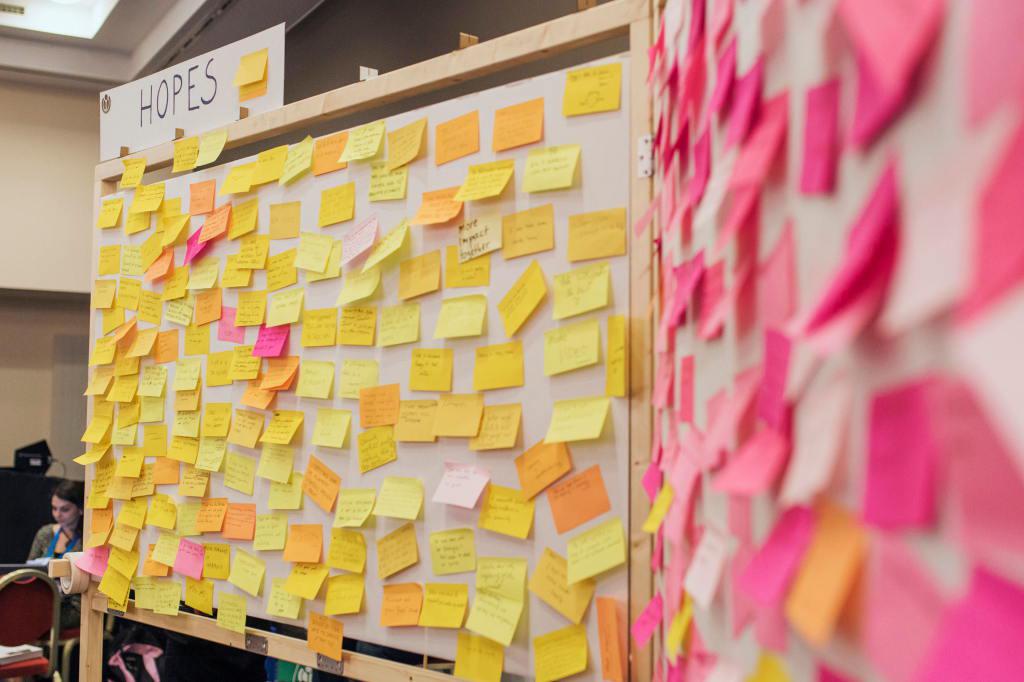
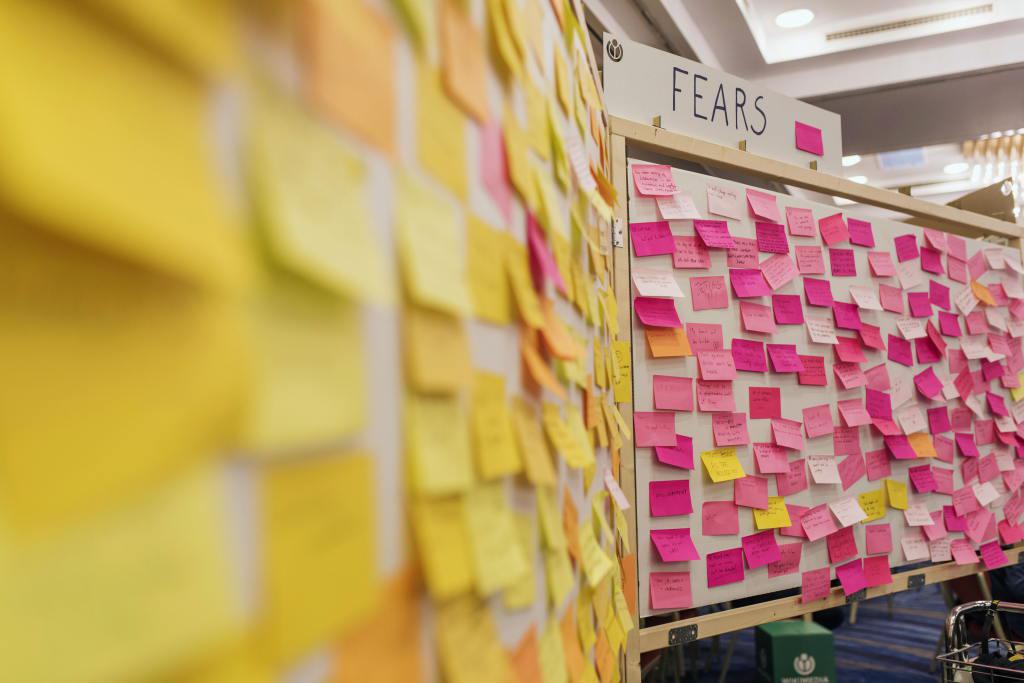
“Hopes and fears” at the Wikimedia Conference in 2017. René Zieger for Wikimedia Deutschland e.V. on Wikimedia Commons (1, 2) // CC BY-SA 4.0.
The 2030 horizon
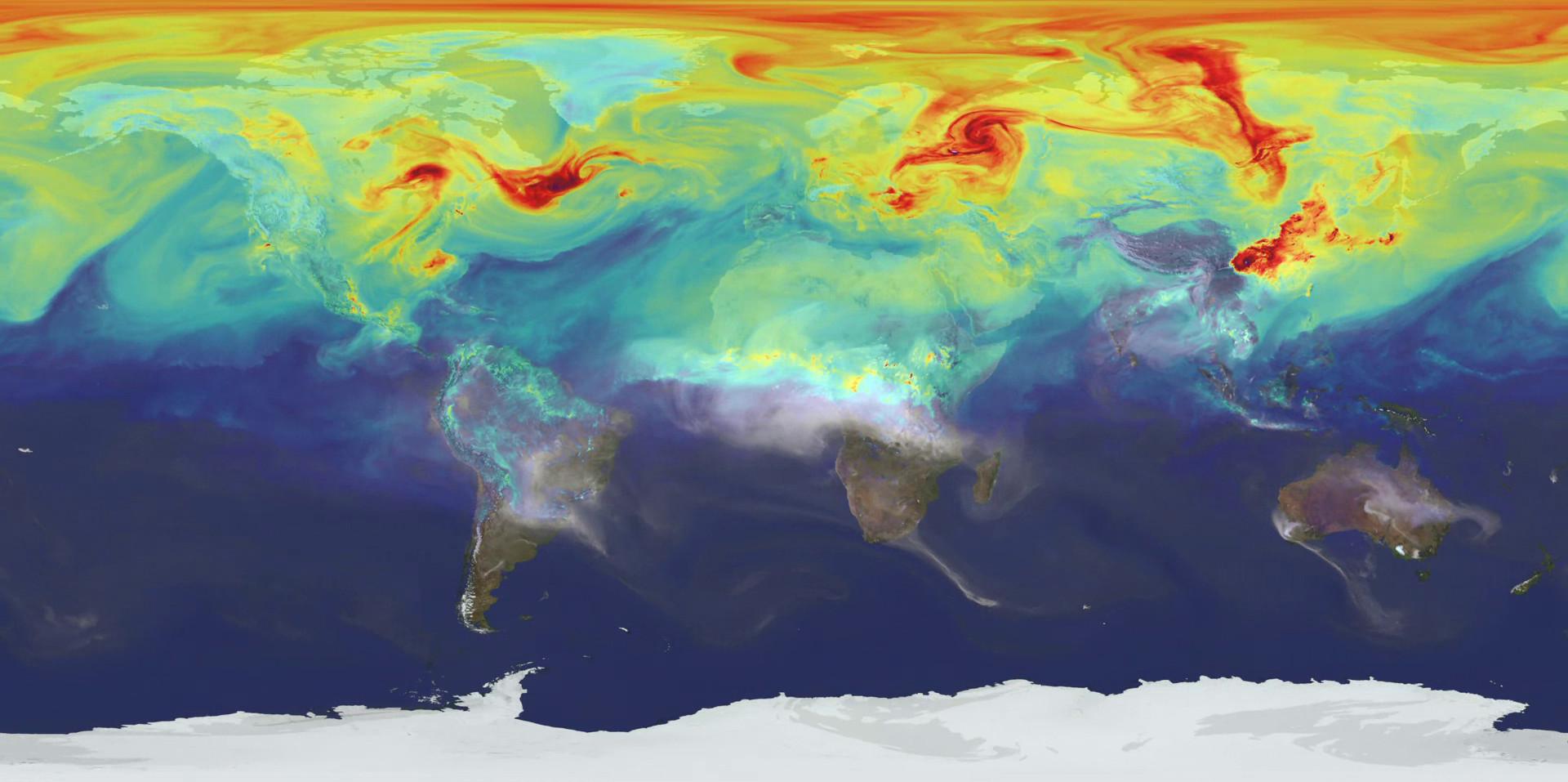
NASA’s Goddard Space Flight Center on Wikimedia Commons // Public Domain
What would the world look like in 2030? What could we reasonably estimate, and what was unknowable? We grounded our collective thinking in facts, like good Wikipedians, and from there tried to figure out our place in the world of 2030.
A broad direction for the movement
We started from a simple question: What do we want to build or achieve together by 2030? The strategic direction was not meant to be a strategic plan. Plans are usually for 3–5 years, executable and measurable, specific to organizational capacity and resources. The direction needed to be broad, enduring, ambitious, and clear enough to provide guidance on overarching goals against which a specific plan could be built. Using 2030 as a time horizon enabled us to untangle our aspirations from our more immediate roles and interests, and let our imagination roam more freely.

From on-wiki discussions, to large conferences, to small meetups, to expert interviews, to desk and field research, the process was exhaustive, messy, and fascinating. It did not take long to confirm that the greatest strength of the Wikimedia movement is the talent, dedication, and integrity of its members. We are all part of this movement because we share a belief that free knowledge makes the world a better place.
Citations needed
Thinking about the future is an exercise in imagination, but we’re Wikimedians, so it was an exercise in imagination based on facts, trends, and sources. We looked around to figure out what we already knew about the world we would be living in in 2030. We knew that there would be a lot more people in it, particularly in Asia and Africa.[8] We knew that technology would evolve dramatically, notably through mobile devices,[9] rich media, messaging, and new interfaces.[10] We knew that it would be taking about a hundred years for children in low-income countries to catch up to the education levels achieved in developed countries.[11] And we knew that there was a trend towards a centralization of the Internet[12] and a consolidation of power in the hands of a few giant companies,[13] particularly in the tech industry.[14]
World population projected to reach 9.7 billion by 2050. United Nations Department of Economic and Social Affairs (2015-07-29).
Mobile is Eating the World, 2016-2017. Benedict Evans. Andressen Horowitz. (slides on slideshare).
Internet trends 2017. Kleiner Perkins. Download report (PDF, 14.5Mb).
Why wait 100 years? Bridging the gap in global education. Rebecca Winthrop and Eileen McGivney. Brookings, June 10, 2015.
Are We Breaking The Internet?. Tristan Louis. Fast Company, May 3, 2017.
The rise of the superstars. The Economist, September 15, 2016.
How a Few Monster Tech Firms are Taking Over Everything from Media to Space Travel and What it Means for the Rest of Us. Joel Kotkin. The Daily Beast, February 9, 2014.
.jpg)
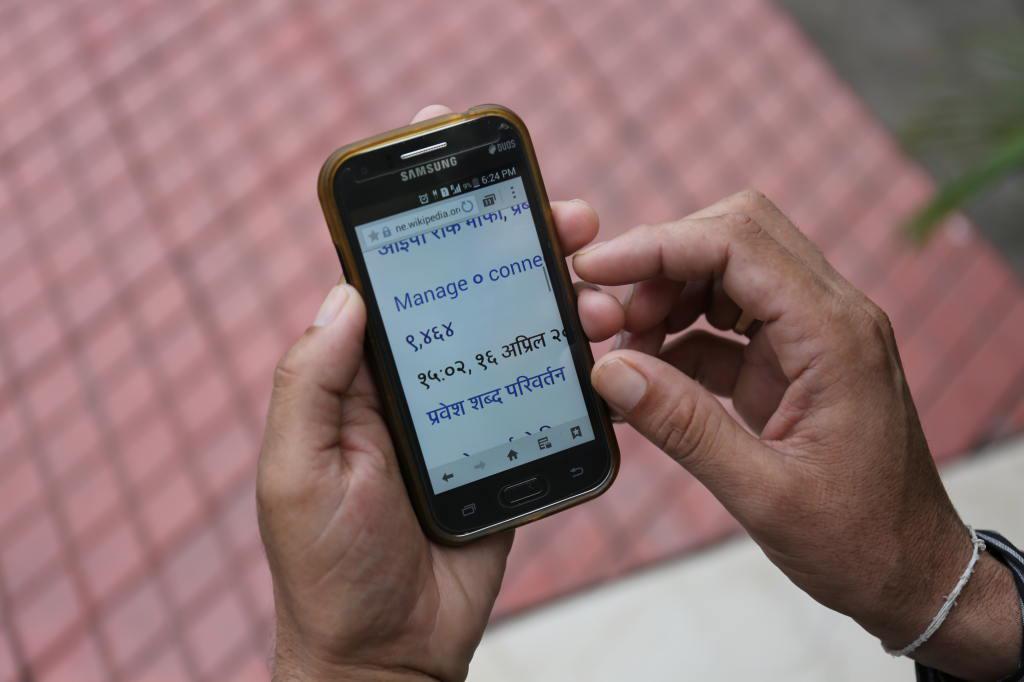
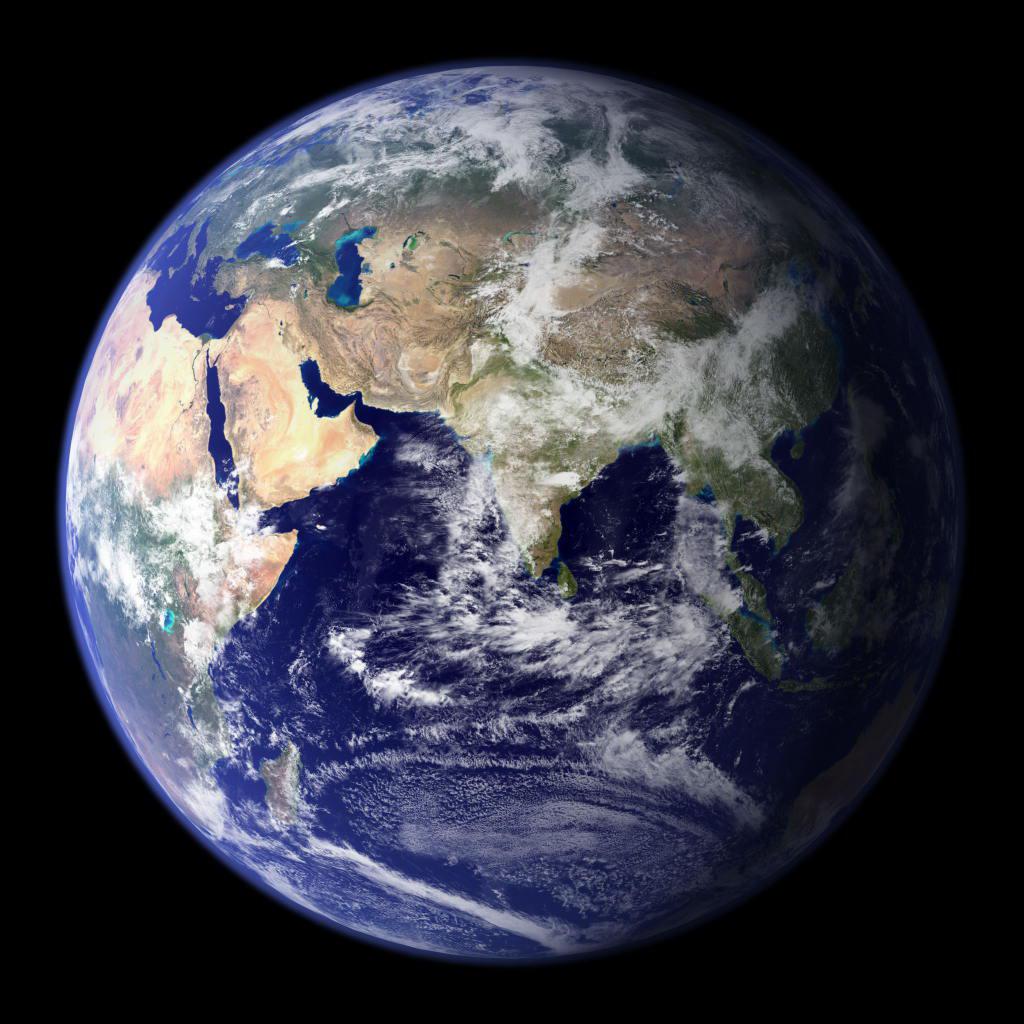
.jpg)
.jpg)
Rod Waddington (1, 4), CC-By-SA 2.0 // NASA (2), Public domain // Zack McCune (3), CC By-SA 4.0 // Benoît Prieur (5), CC By-SA 4.0.
Engaging a whole movement
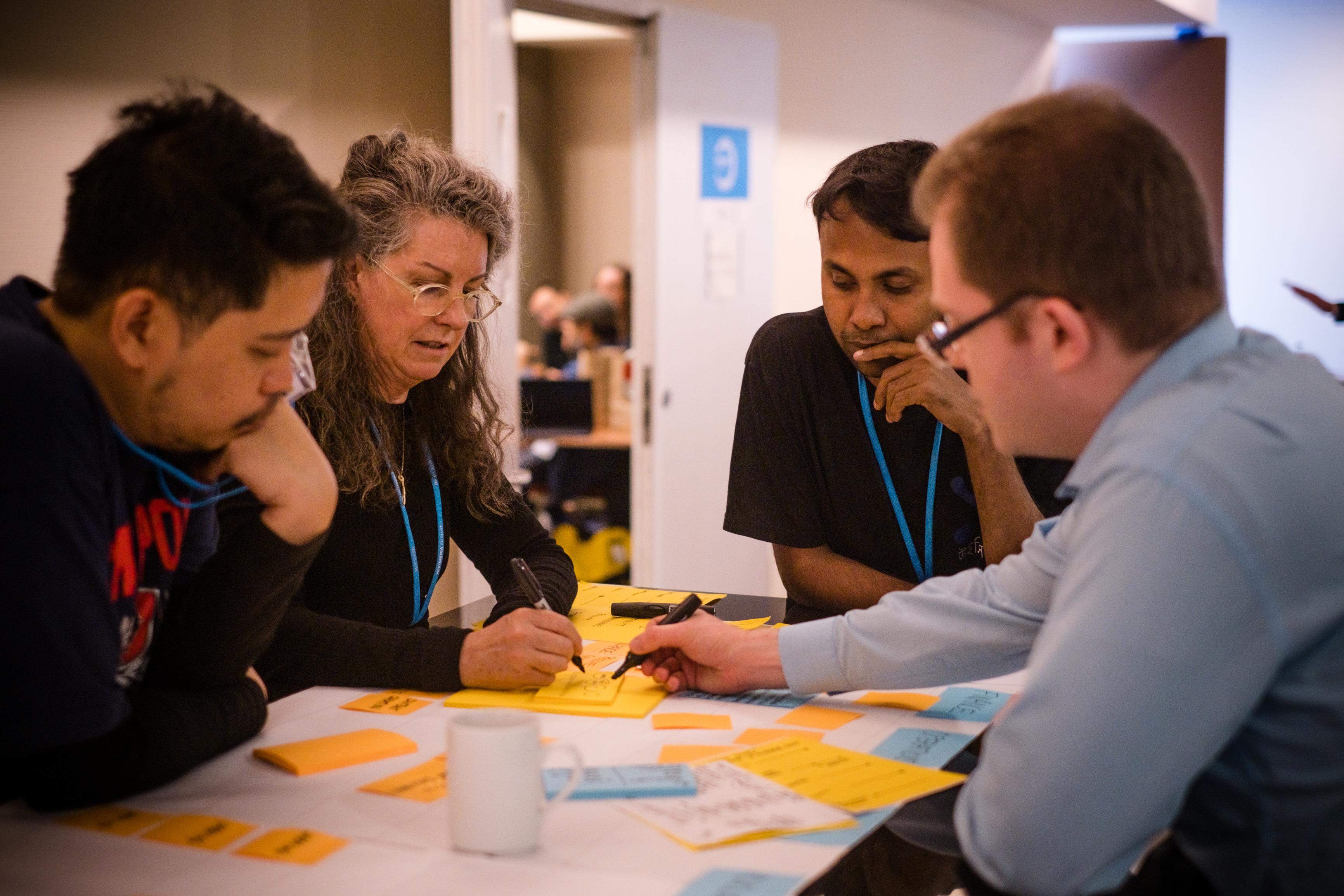
Jason Krüger for Wikimedia Deutschland e.V. // CC BY-SA 4.0.
A movement strategy is useless unless it resonates with the constituents of the movement. Trying to impose a top-down vision would have been catastrophic. The only (and much harder) way this could work was by bringing the whole movement along in the process, including the voices that had been historically left out.
Learning from each other
Wikimedia 2030 was arguably the largest participatory process the Wikimedia movement had ever undertaken. For several months, the movement buzzed with activity, as people went through cycles of discussion online and in-person, and converged towards the direction.
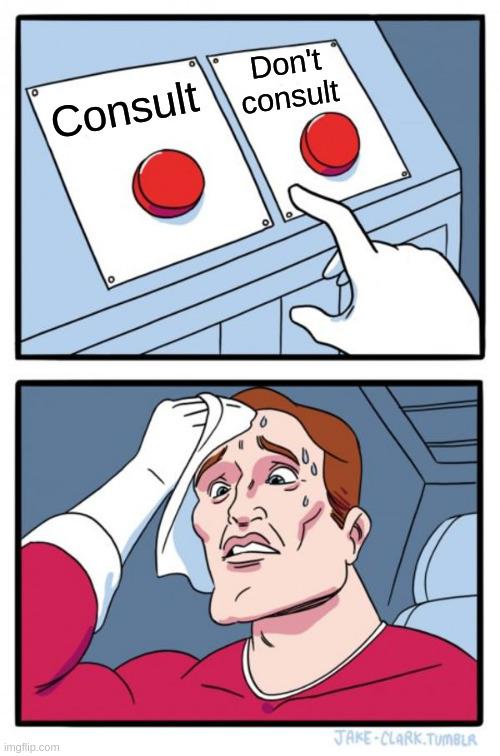
In the Wikimedia movement, “consulting the communities” can be a Catch-22 dilemma, where consultation may grind an initiative to a halt and bury it under interminable deliberations, but moving forward without prior discussion is likely to lead to people later objecting that they were not consulted. Consultation (or even better, co-creation) is almost always the best route, but it can also be very frustrating. I made this version of the “Daily Struggle / Two Buttons” meme to find some levity in this process. Adapted from the original artwork by Jake Clark (all rights reserved) and inspired by this tweet.
To ensure a rich discussion and a legitimate outcome, we intentionally reached out to “new voices.” They were not just people outside the movement, but also people within the movement who didn’t traditionally participate in this kind of discussions. We contracted eighteen coordinators to organize and facilitate discussions in many languages, with support from the Foundation’s Community Engagement team. Volunteers and groups also organized discussions with their communities and affiliates across wikis and off-wiki. This encouraged many contributors to participate in the discussion by avoiding the “Not my wiki” effect.[15]
All those discussions and research projects produced massive amounts of notes, reports, and documentation, so that anyone could follow facts and decisions to their source, and to make it easier for people joining the process later to catch up.[16]
“Not my wiki” is a community essays on Meta-Wiki that describes the tendency for Wikipedians and Wikimedians to avoid discussions that happen outside of their immediate online surroundings.
Strategy > Wikimedia movement > 2017 > Reports. Meta-Wiki, 2017.
Amplifying new voices
As we were looking at the trends to consider, we also needed to go beyond what we knew, and who we were familiar with. Our vision requires that we realize that we’re not alone. We’re part of an ecosystem, and we need others. We need partners. Those voices will help define our future, because they’re part of it.
This work involved hundreds of interviews, small-group discussions (“salons”), research, and building relationships for future collaboration. The Foundation notably partnered with Reboot in Indonesia and Brazil,[17] to conduct research complementary to what was done with the New Readers program in countries where Wikimedia wasn’t well known.[18] They interviewed partners, subject matter experts, and conducted contextual inquiries with readers in their own environment using methods of design research. In parallel, they also conducted online surveys in the places where we were the most popular, to understand how people perceive and use Wikimedia.
This work informed and complemented community discussions with new voices that hadn’t traditionally been included in strategy discussions, or that were not yet part of the movement. They helped us identify the global trends that we needed to consider as we discussed our future.
The Foundation couldn’t do this alone; we are a global and distributed movement, and local relationships are much more likely to bear fruit than a centralized approach. The Foundation also reserved budget for affiliates to run small-group discussions with subject matter experts.
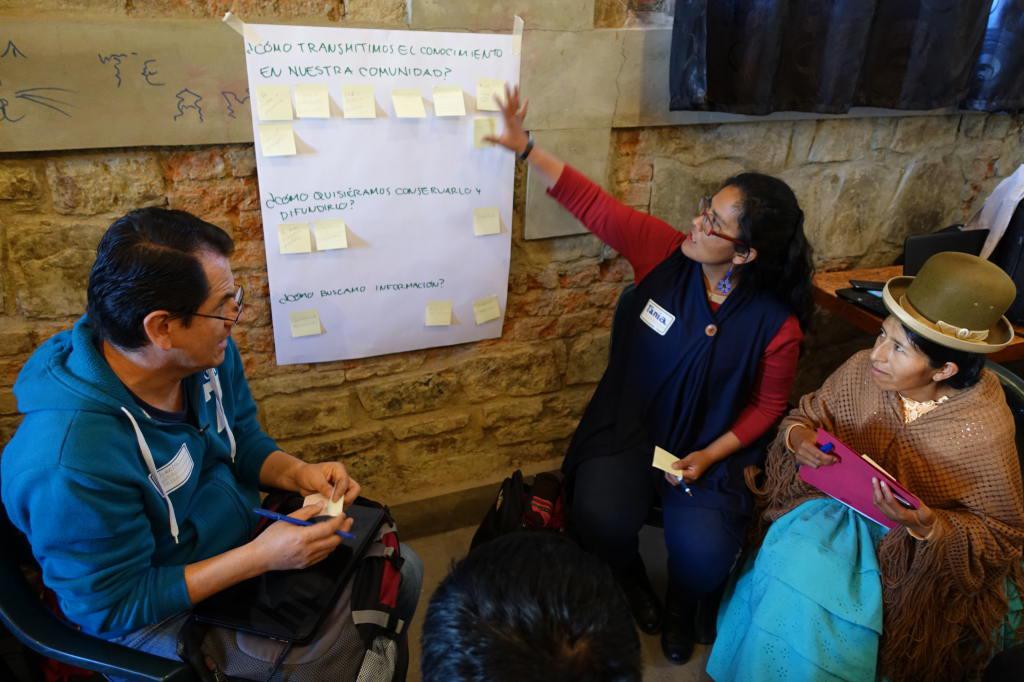
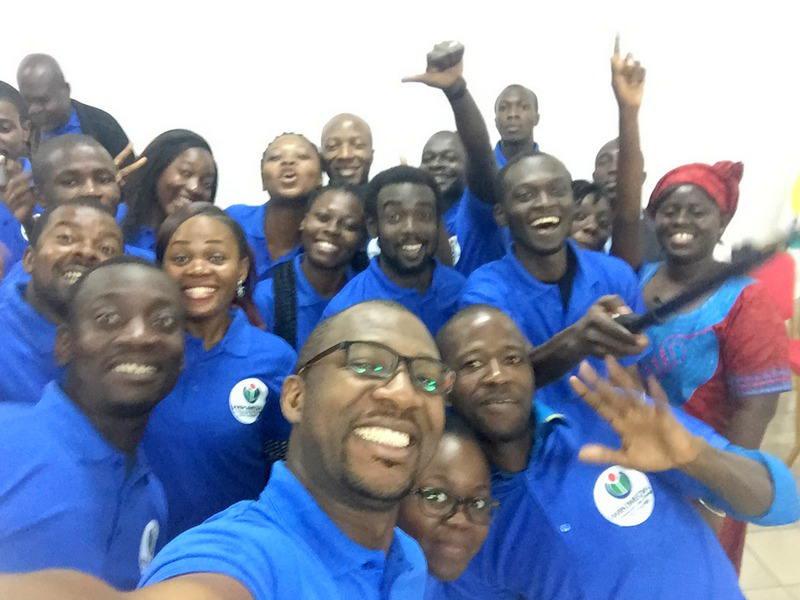
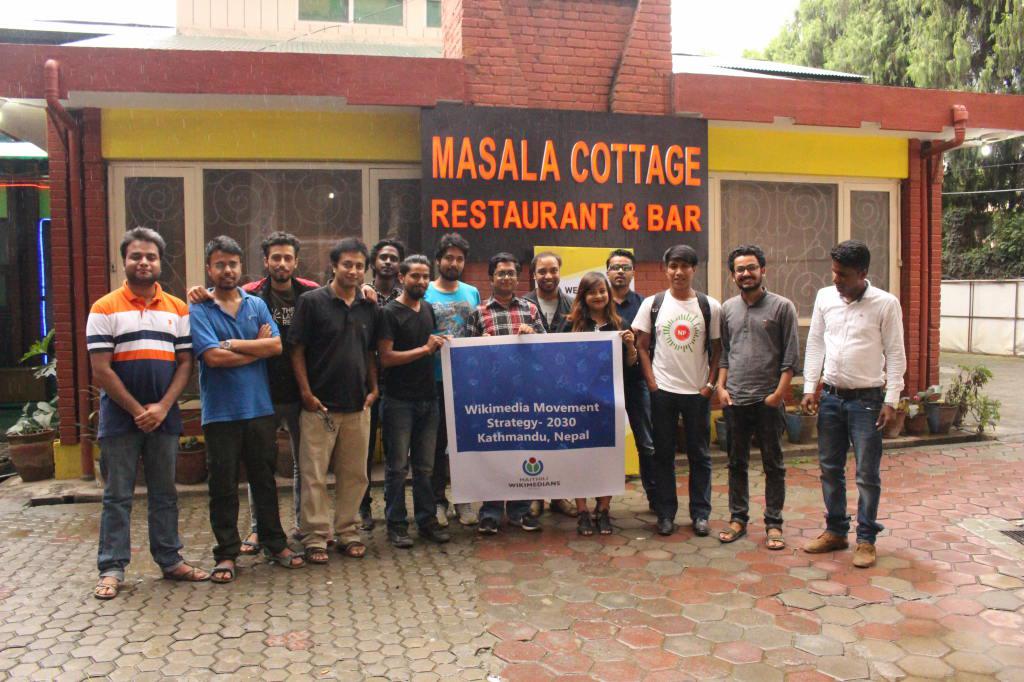
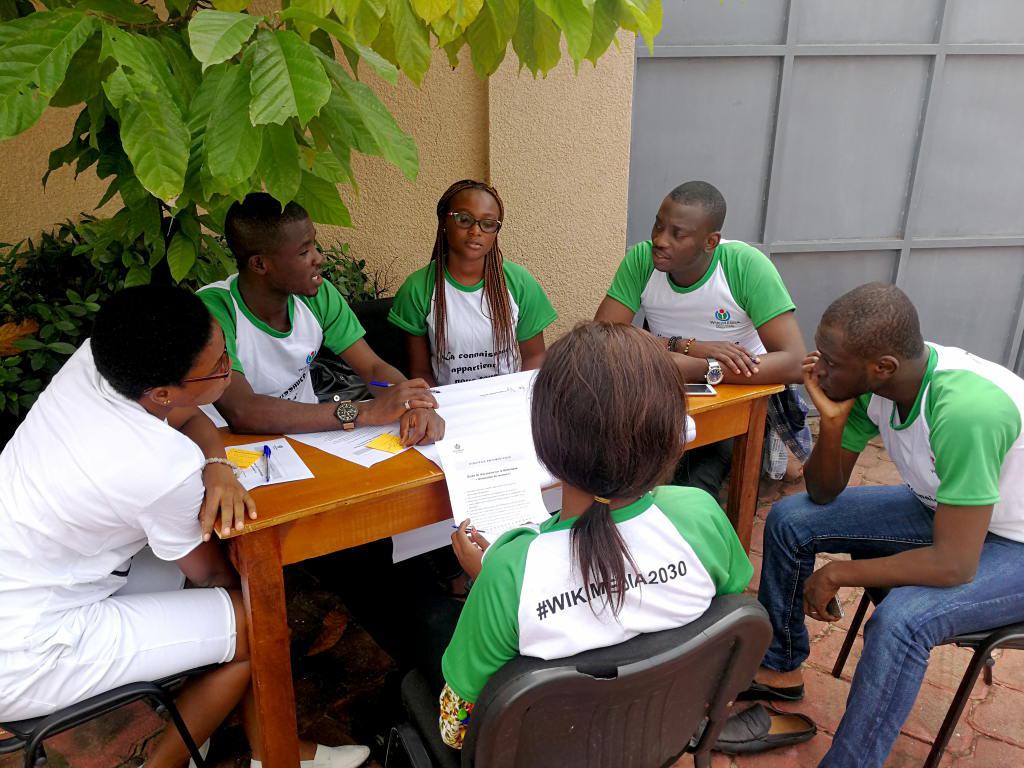
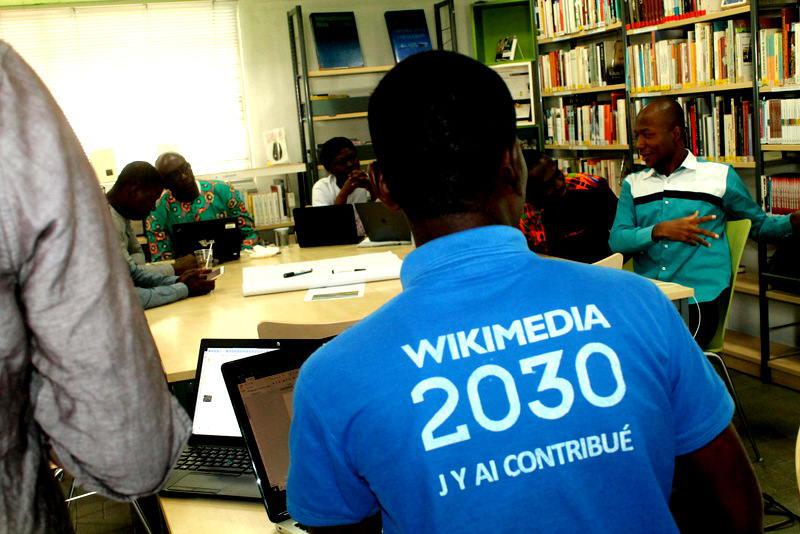
Barrioflores (1) // Aman ADO (2, 5) // Nabin K. Sapkota (3) // Modjou (4) // All CC BY-SA 4.0.
Reboot is a small consultancy firm Reboot founded “on the belief that all people, especially those that have been historically oppressed and marginalized, deserve a meaningful say in shaping our world.”
The New Readers program was an interdisciplinary initiative of the Foundation between 2016 and 2019 whose goal was “understanding and serving potential Wikimedia readers in countries where access to the internet [was] quickly growing.”
The Strategic Direction

Svenja Kirsch, Anna Lena Schiller, and NANöR on Wikimedia Commons // CC By-SA 4.0.
Writing a compelling vision for the future is a difficult enough task in one language. Our strategic direction needed to make sense and be translatable into all the languages of the Wikimedia movement, and also relatable across a wide variety of cultures. Through trial and error, in the Wikipedia way, we refined and improved our drafts until the final text revealed itself.
Roads, bridges, and villages
Wikimania, the annual conference of Wikimedians, was the first opportunity for the Wikimedia movement to discuss the draft strategic direction. The conference in Montréal was a chance to celebrate the concrete artifact borne out of months of intense online discussions, and to continue the conversations in person. Of course, only a small part of the Wikimedia movement ever attends the conference, so we also sought feedback in many other forums as well, including smaller regional meetups.
When drafting this first version of the strategic direction, I chose intentionally simple language for several reasons. One was that volunteers and affiliates often find the language used by the Foundation too jargony and full of corporate buzzwords.[19] I wanted the language of the direction to resonate with people regardless of their affiliation in the movement, and I wanted people to feel like they could have written those words themselves.
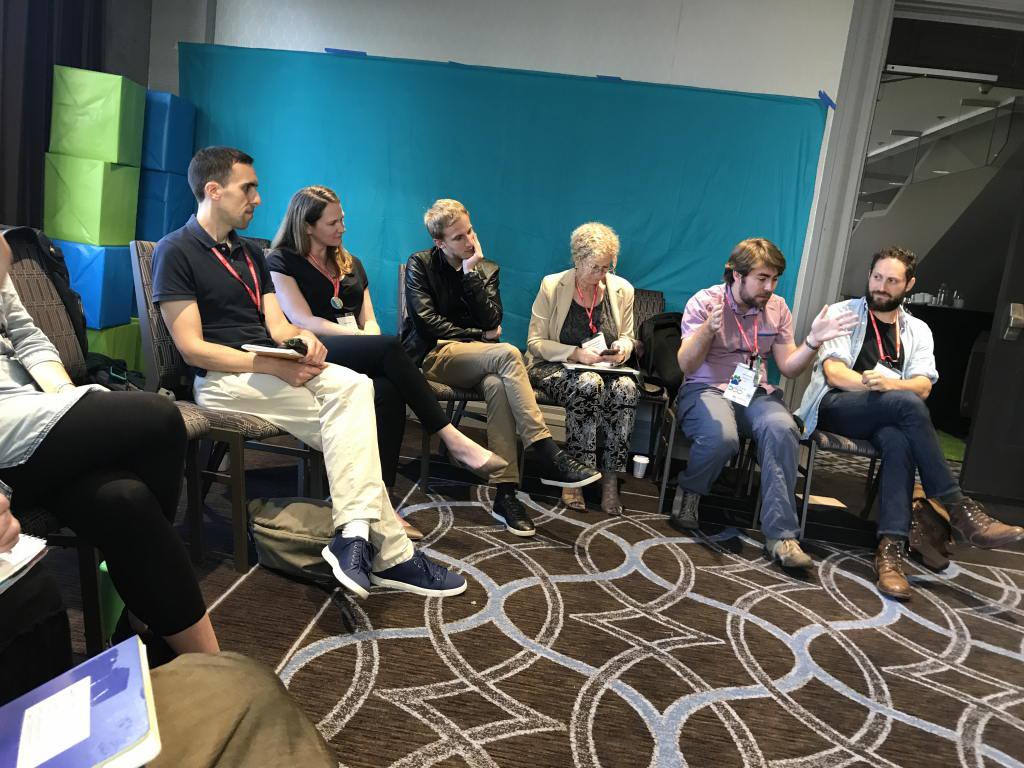
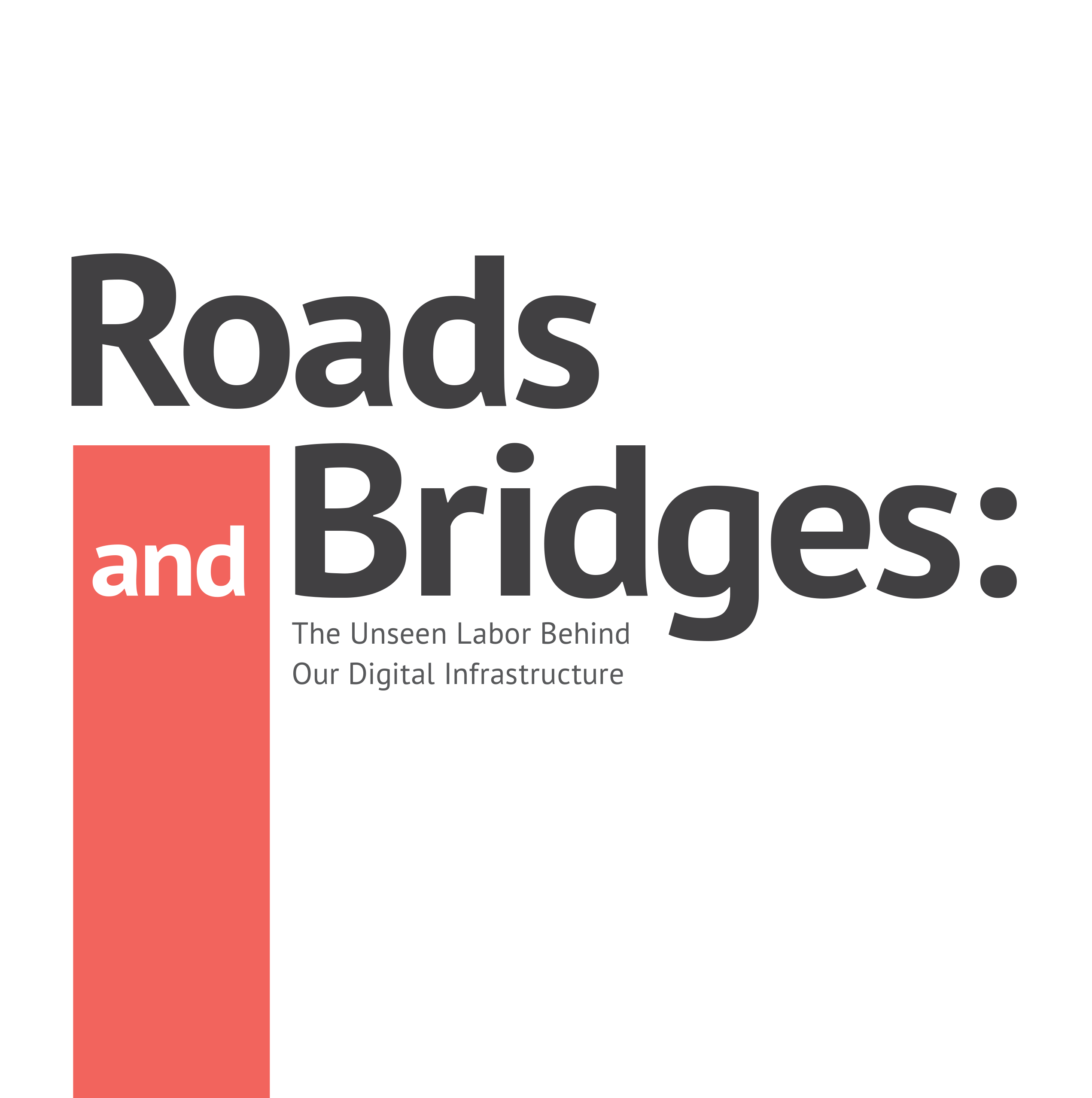
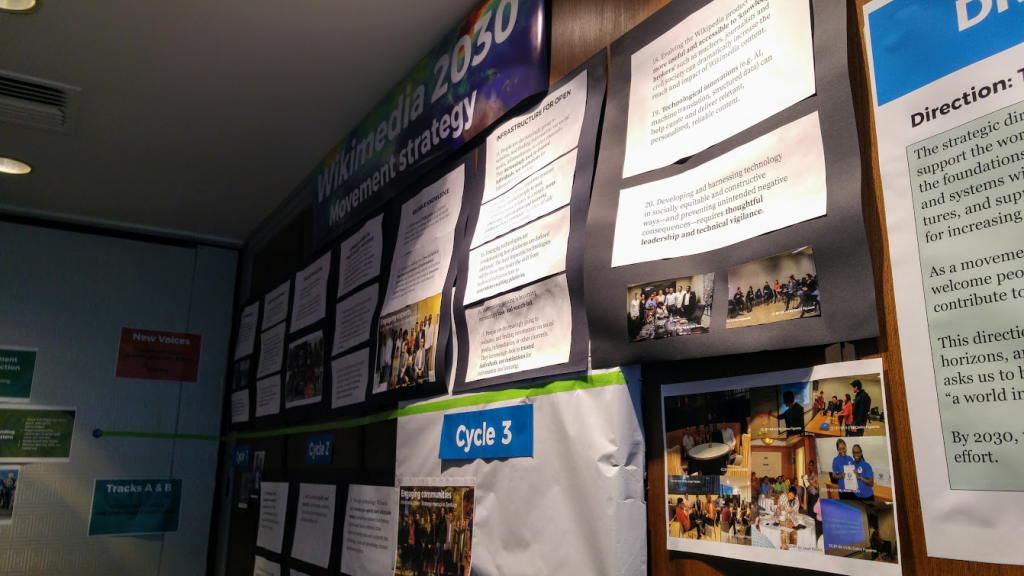
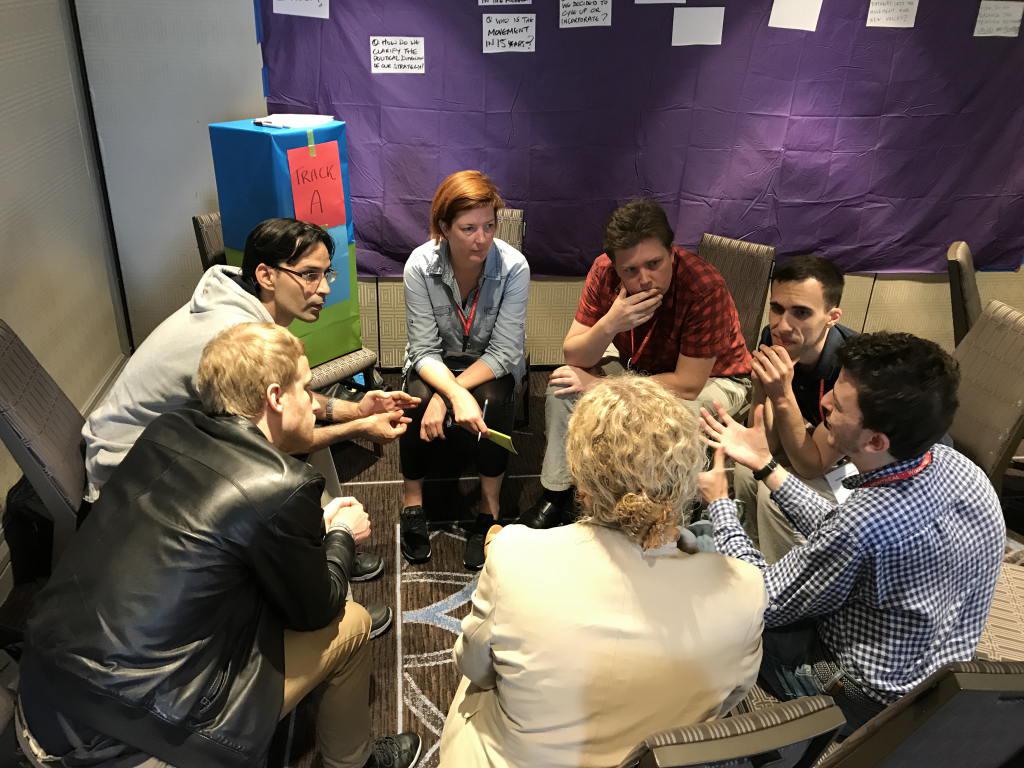
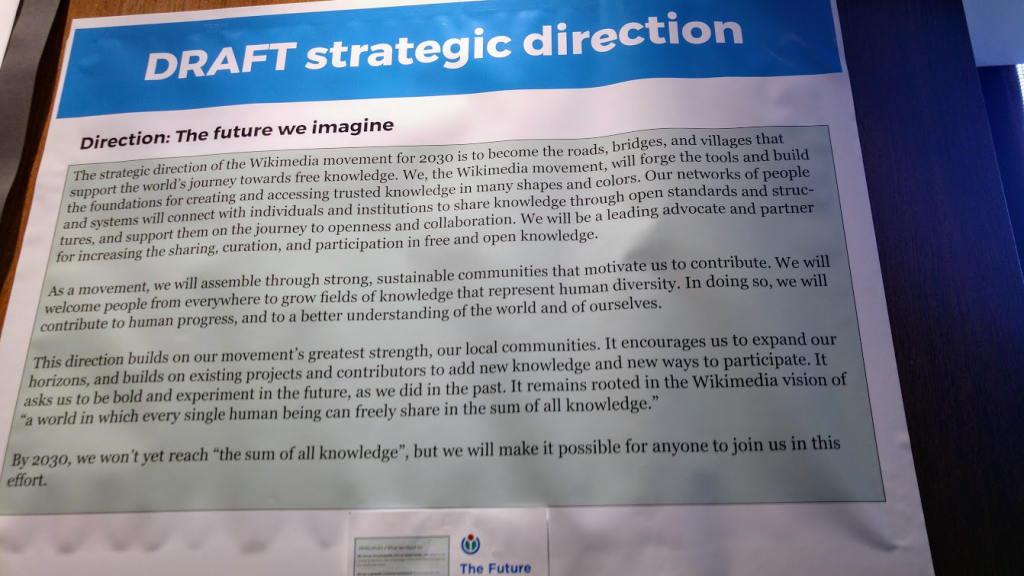
Abby Walla / Wikimedia Foundation (1, 4), CC By-SA 4.0. // © Nadia Eghbal / Ford Foundation (2) // Camelia Boban (3, 5), CC By-SA 4.0.
I had another goal for using simple language and relying on metaphors: I wanted the strategic direction to be easily translatable to other languages and cultural contexts. It was reasonable to assume that all languages had ways to convey universal meanings like “roads,” “bridges,” “villages,” “journey,” “tools,” “shapes,” and “colors:”
The strategic direction of the Wikimedia movement for 2030 is to become the roads, bridges, and villages that support the world’s journey towards free knowledge. We, the Wikimedia movement, will forge the tools and build the foundations for creating and accessing trusted knowledge in many shapes and colors. …[20]
The “roads and bridges” were a direct reference to Nadia Eghbal’s excellent research report for the Ford Foundation, in which she described the importance of the free and open-source code infrastructure “on which all of digital society relies.”[21] I used the same metaphor to describe the knowledge infrastructure that Wikimedia was aspiring to, and added the “villages” to highlight the central role of communities in the movement.
“The tolerance people might have for jargon and buzzwords in their everyday life won’t be there online. People want to understand what the Foundation are doing and how it’ll change what they do as an editor or improve the experience for readers, not whether it satisfies a key performance indicator.” Writing clearly. Meta-Wiki essay.
Wikimedia 2030: A draft strategic direction for our movement. Katherine Maher. Diff, the Wikimedia Blog. August 10, 2017.
Roads and Bridges: The Unseen Labor Behind Our Digital Infrastructure. Nadia Eghbal. Ford Foundation, 2016.
Direction and Endorsement
The final text of the strategic direction elevated two major concepts: Knowledge Equity, centered around justice in the creation and dissemination of knowledge; and Knowledge as a Service, centered around a technical infrastructure for knowledge that others can build upon and extend.
By 2030, Wikimedia will become the essential infrastructure of the ecosystem of free knowledge, and anyone who shares our vision will be able to join us. …
Knowledge as a service: To serve our users, we will become a platform that serves open knowledge to the world across interfaces and communities. We will build tools for allies and partners to organize and exchange free knowledge beyond Wikimedia. Our infrastructure will enable us and others to collect and use different forms of free, trusted knowledge.
Knowledge equity: As a social movement, we will focus our efforts on the knowledge and communities that have been left out by structures of power and privilege. We will welcome people from every background to build strong and diverse communities. We will break down the social, political, and technical barriers preventing people from accessing and contributing to free knowledge.
—Strategic direction (final text).
In order to record the commitment of organizations across the movement, Nicole Ebber and I organized an endorsement campaign for the strategic direction. Nicole Ebber had been leading and coordinating our work with “organized groups” across the movement: meaning chapters, user groups, and other affiliates.
Within a few days, dozens of organizations had added their signature to the direction. By endorsing, they pledged to consider the needs of the movement above their own, and committed to “participating in the next phase of this discussion in good faith and to define, by Wikimania 2018, how to come to an agreement on roles, responsibilities, and organizational strategies that enable us to implement that future.” Over a hundred Wikimedia organizations ended up endorsing the strategic direction.
Recommendations and implementation
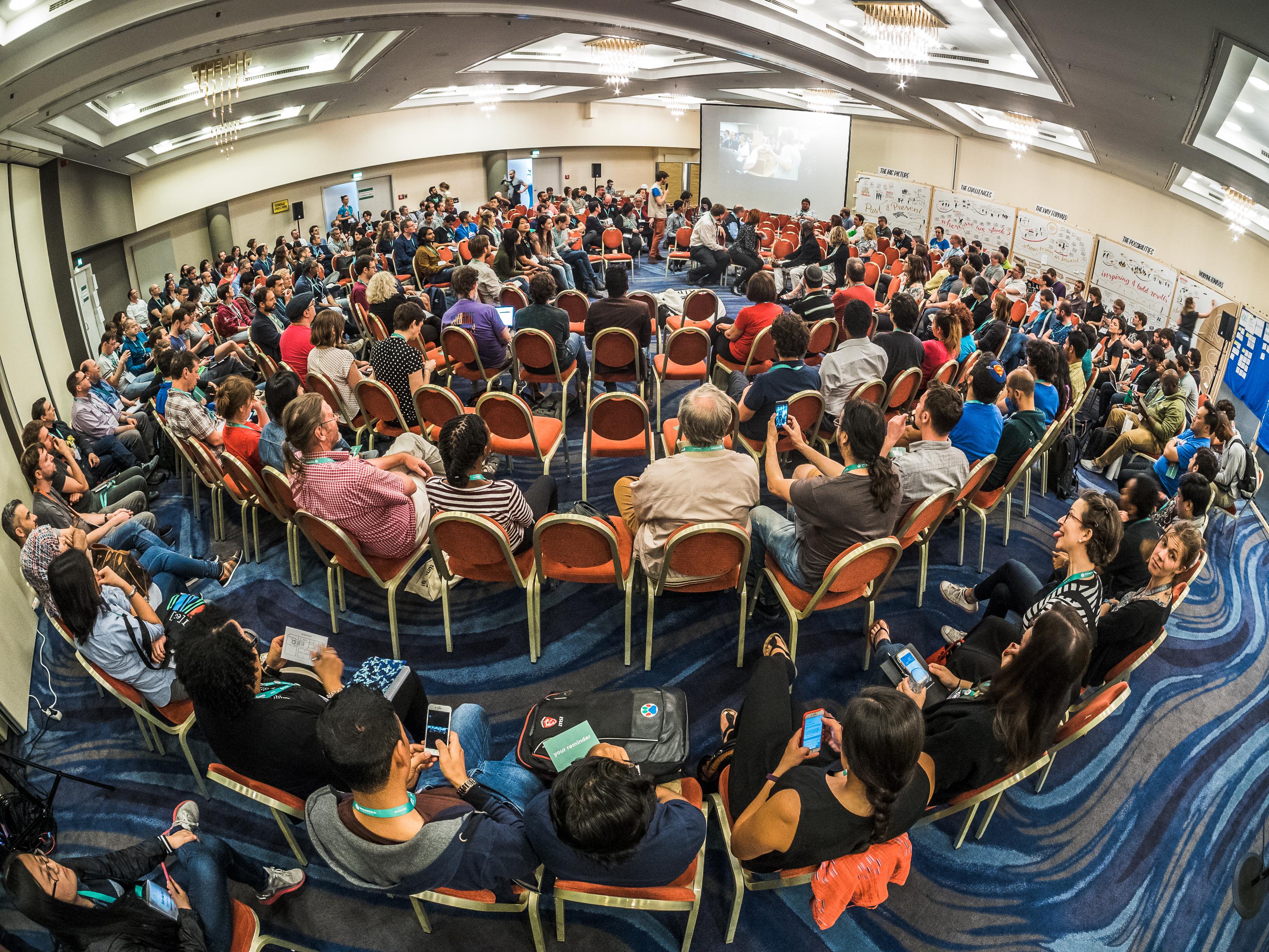
Jason Krüger for Wikimedia Deutschland e.V. on Wikimedia Commons // CC BY-SA 4.0.
The strategic direction was only the first step. Once we had decided where we wanted to go by 2030, the movement needed to figure out how to implement that vision. I was part of the “Revenue streams” working group and helped write recommendations to guide our collective work.
Phase 2: Working groups and recommendations
Between 2018 and 2020 (Phase 2), nine thematic working groups composed of volunteers, staff, and affiliates prepared Recommendations for the movement to work towards the Direction. Some of the discussions revolved around “big questions” like movement roles, governance, and decision making.
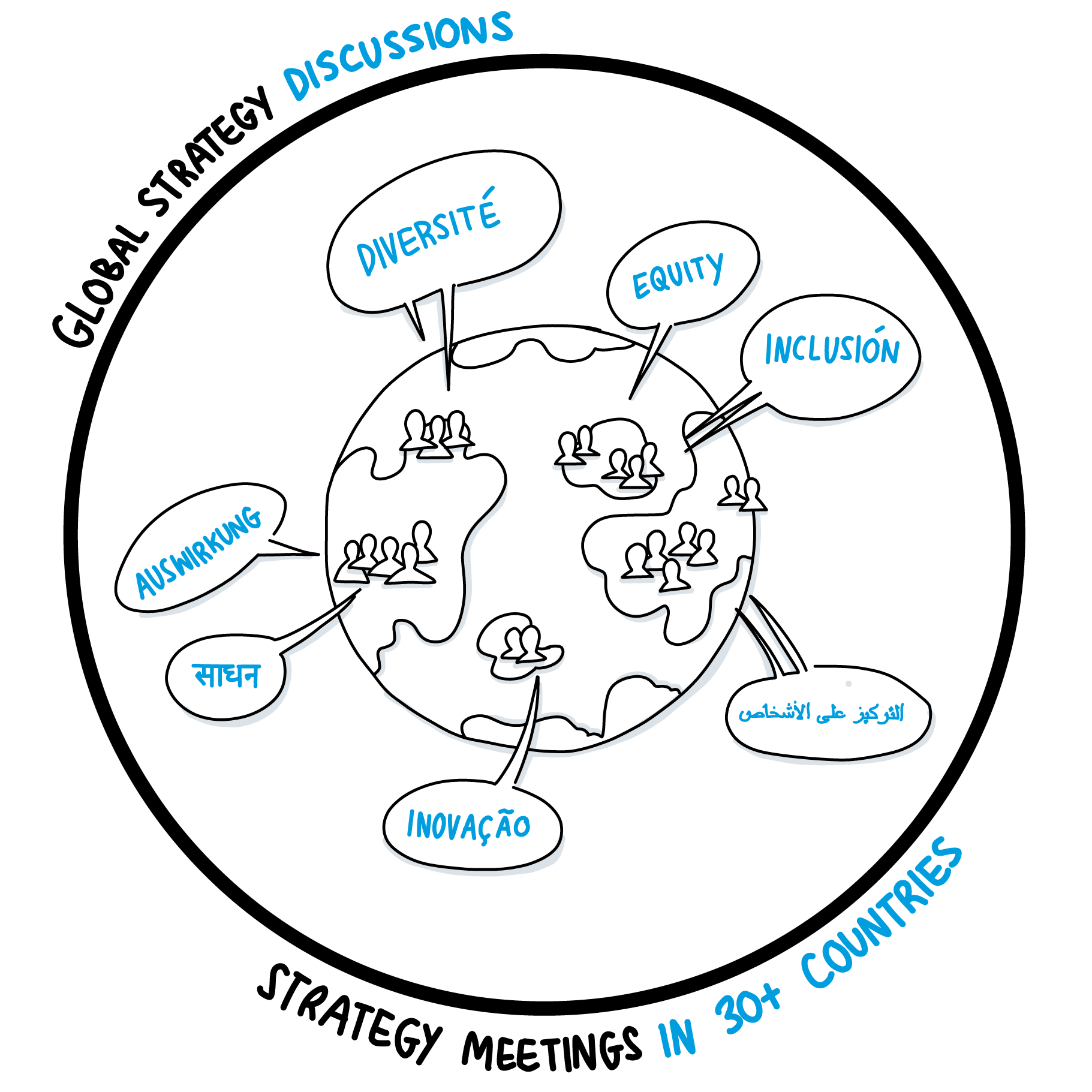
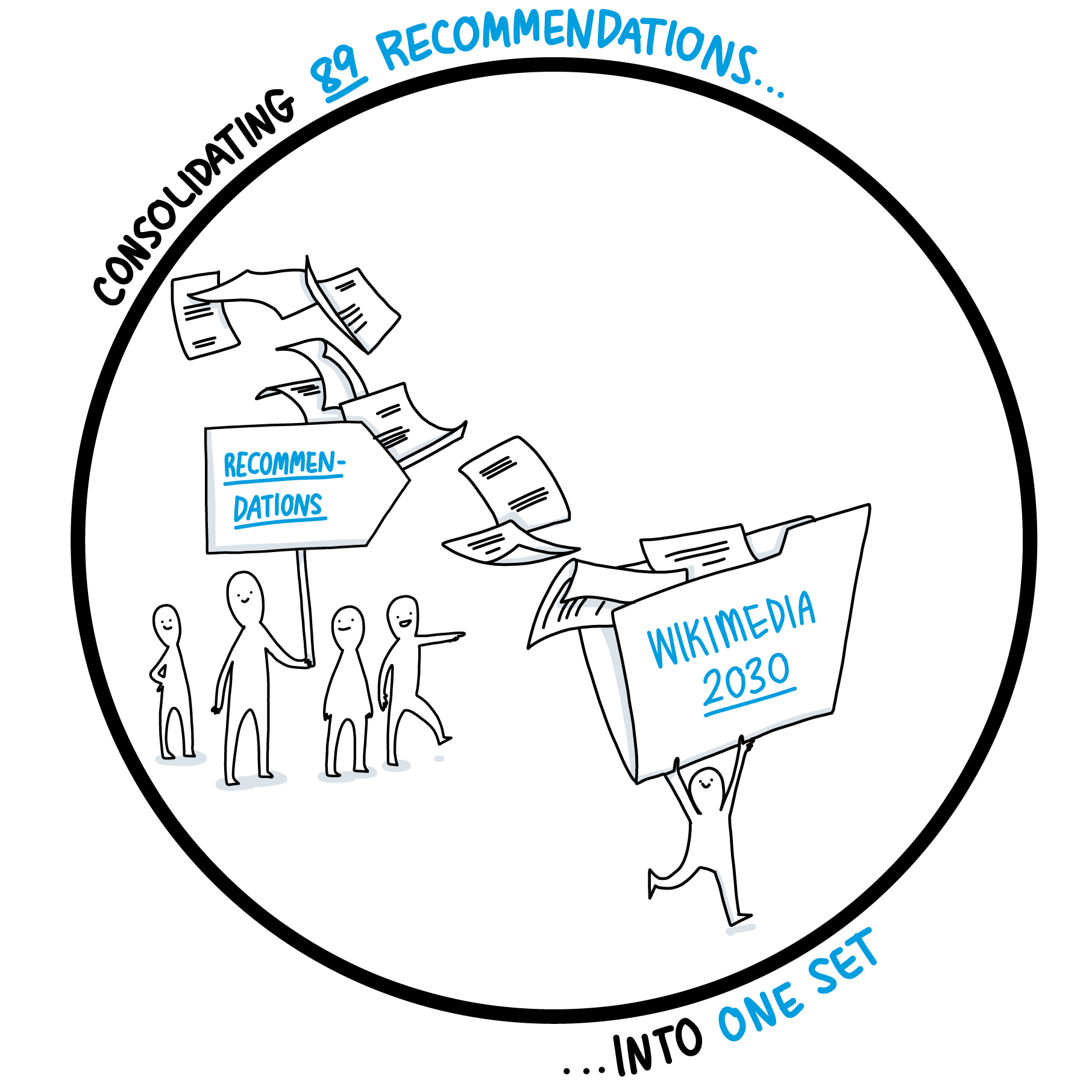
Svenja Kirsch & Anna Lena Schiller on Wikimedia Commons (1, 2 // CC By-SA 4.0.
For my part, after the endorsement of the Strategic Direction, I decided to focus on another endeavor as I joined the Wikimedia Foundation’s Advancement department. Although I was not leading Phase 2 efforts, I continued to advise the Wikimedia 2030 core team as needed during that period.
In parallel with my work on Revenue strategy, I continued to participate in Wikimedia 2030 as a member of the “Revenue Streams” working group. I was also one of the last group of “integrators” who took the 89 recommendations coming from all the working groups, and consolidated them into the final list of recommendations (and accompanying principles) in 2020.
Phase 3 and beyond: Towards implementation
As of 2023, the movement is now in Phase 3 of Movement Strategy: implementation through prioritized initiatives. This last phase is notably hindered by strategy fatigue and loss of momentum. While the Recommendations are considered to be necessary, they are also unlikely to be sufficient to realize the 2030 vision of the movement. In 2022, the Foundation grounded its 2022–2023 annual plan in the strategic direction, and is now seeking to align its multi-year strategic planning with the direction, recommendations, principles, and other movement-wide strategic guideposts.

Svenja Kirsch & Anna Lena Schiller on Wikimedia Commons // CC By-SA 4.0.
The People
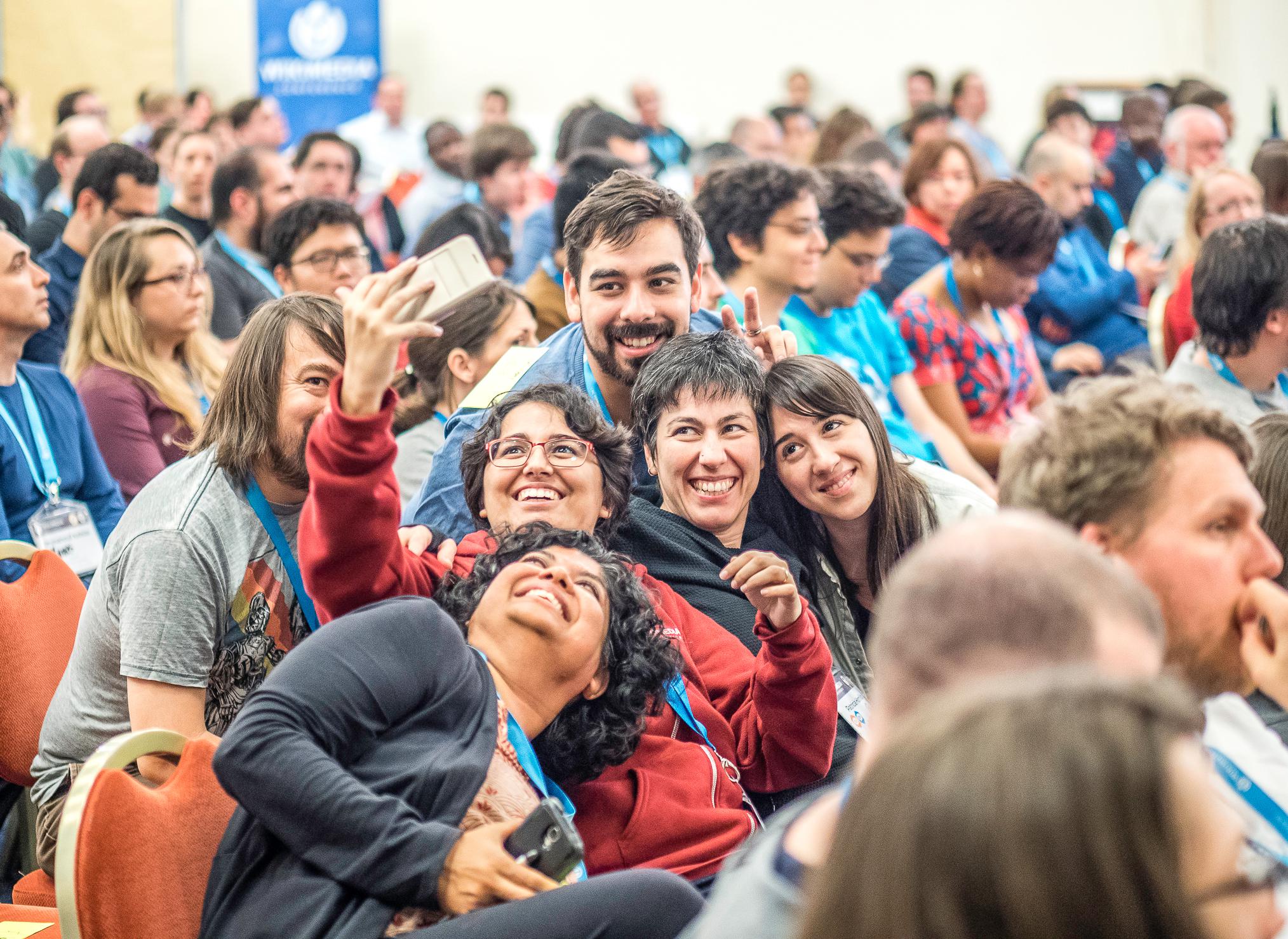
Jason Krüger for Wikimedia Deutschland e.V. on Wikimedia Commons // CC BY-SA 4.0.
Beyond process, direction, and recommendations, movement strategy was really about movement building. It was about listening to each other, finding common ground, and seeing each other as kin.
It’s hard to overestimate the impact of movement strategy on the trajectory of the Wikimedia Foundation and the movement, and I feel a sense of accomplishment (and rare pride) when I think about my role in it. Not everyone has the opportunity to shape the future of a global movement that itself has an impact on billions of lives.
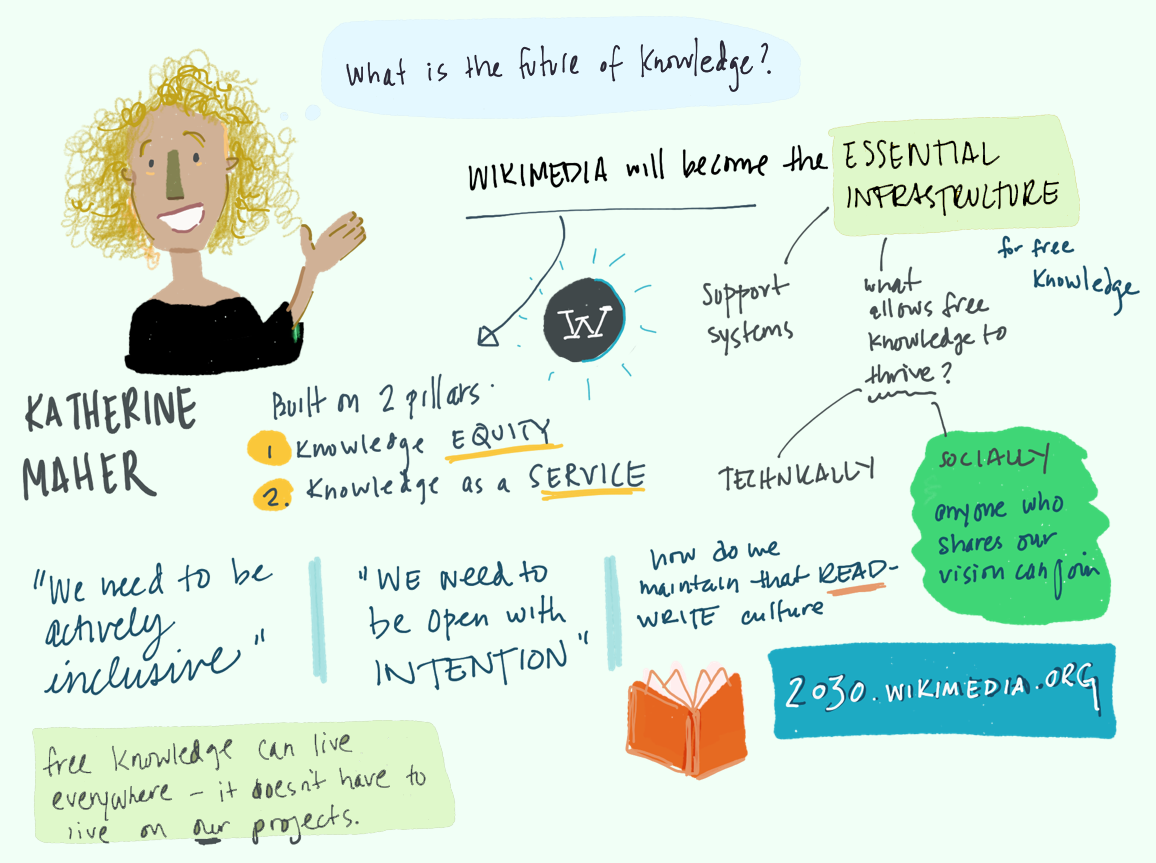
The strategic direction has been the main narrative of the Wikimedia movement since 2017, like in this talk by Katherine Maher illustrated by Jess Klein (Wikimedia Commons // CC By-SA 4.0).
Along with my efforts to promote neurodiversity, my work on movement strategy is probably one of the most notable elements of my legacy in the Wikimedia movement. But beyond legacy, what I will remember most about that chapter of my life is all the people I met and worked with, without whom none of this would have been possible. Without them, this mission would, undoubtedly, have been truly impossible.
